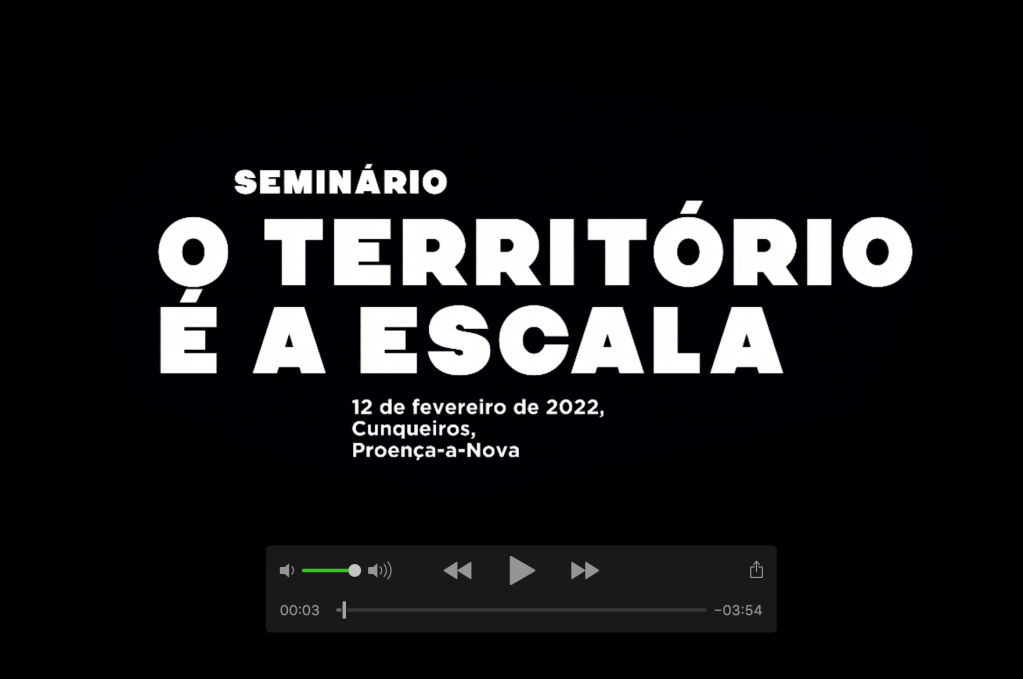Humus Residency Open Call Results
It is with great excitment that PES welcomes the artists Célia PICARD and Hannes SCHRECKENSBERGER , who have just being selected for the HUMUS Residency June/September 2024
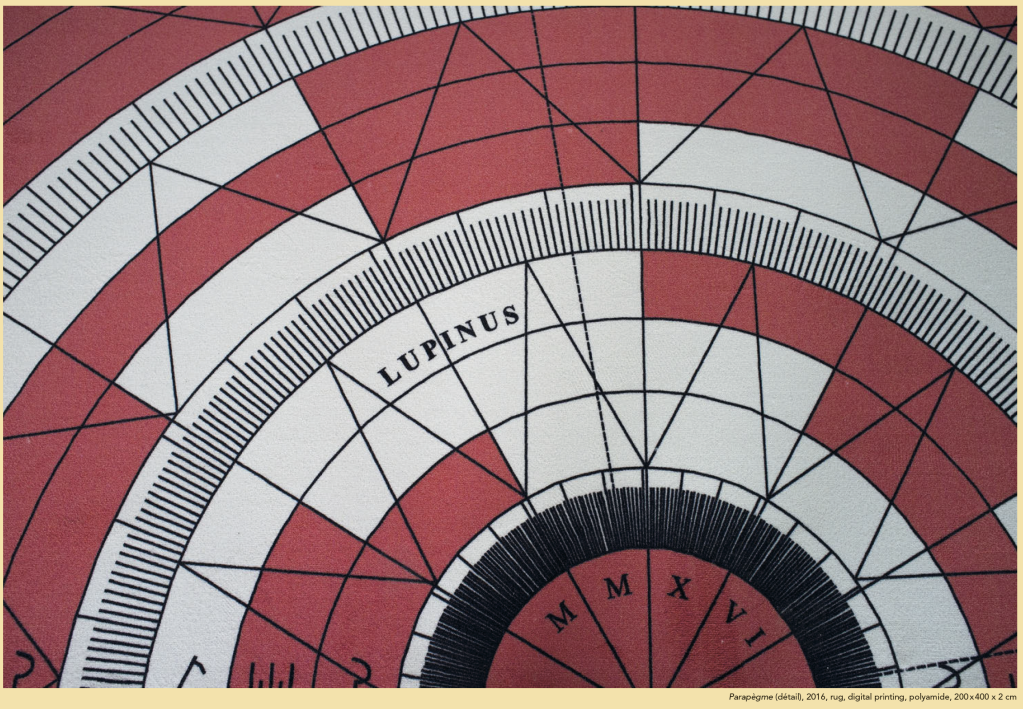
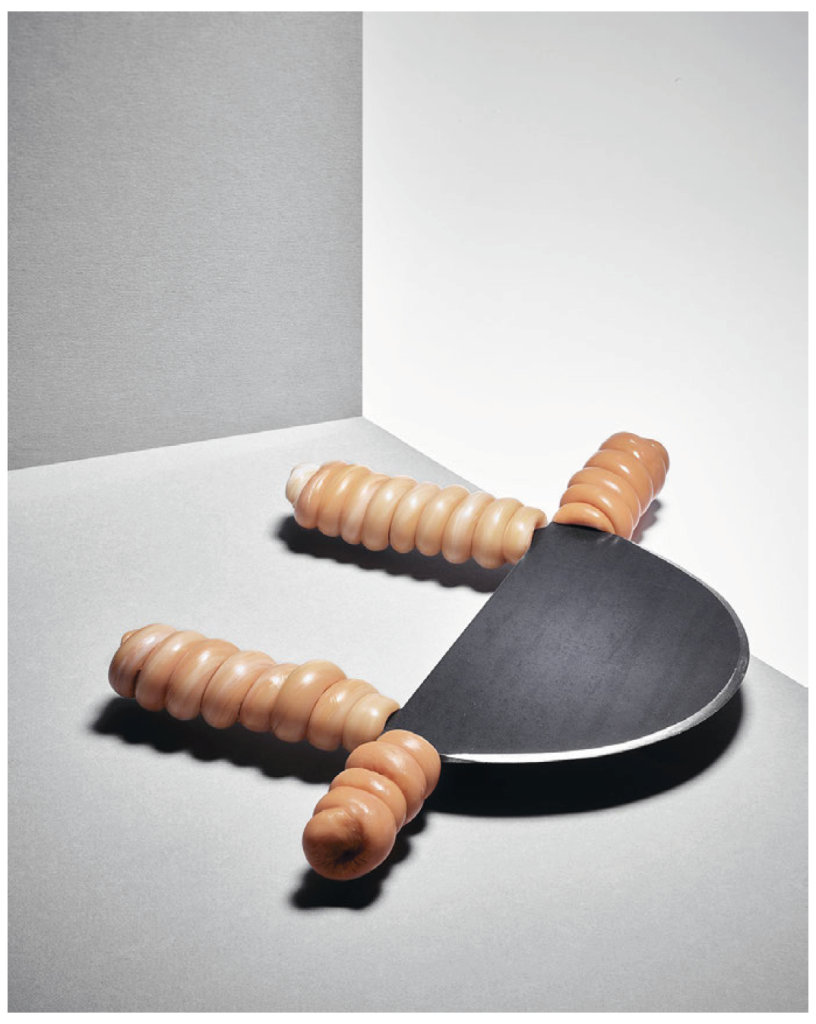
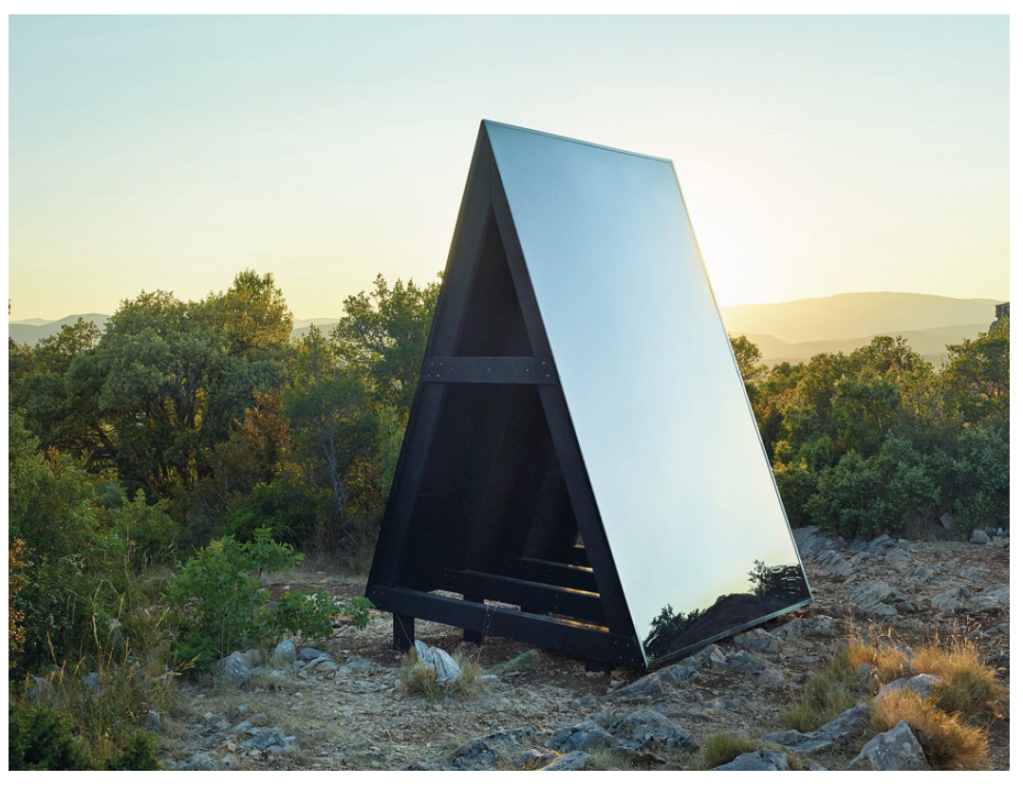
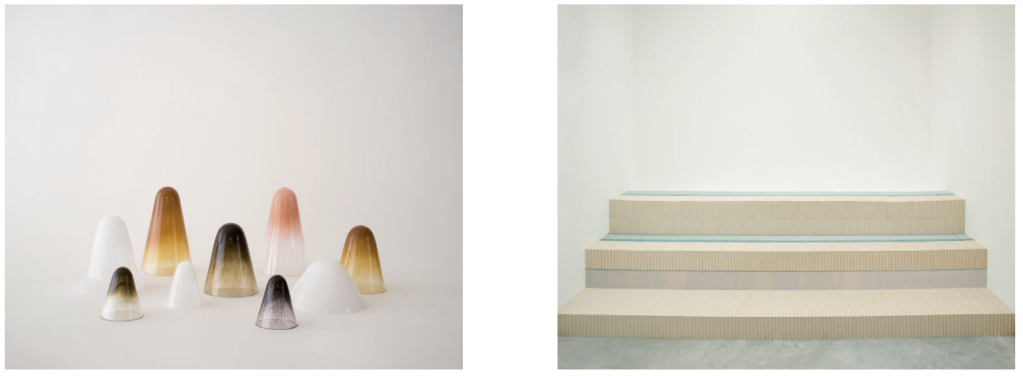
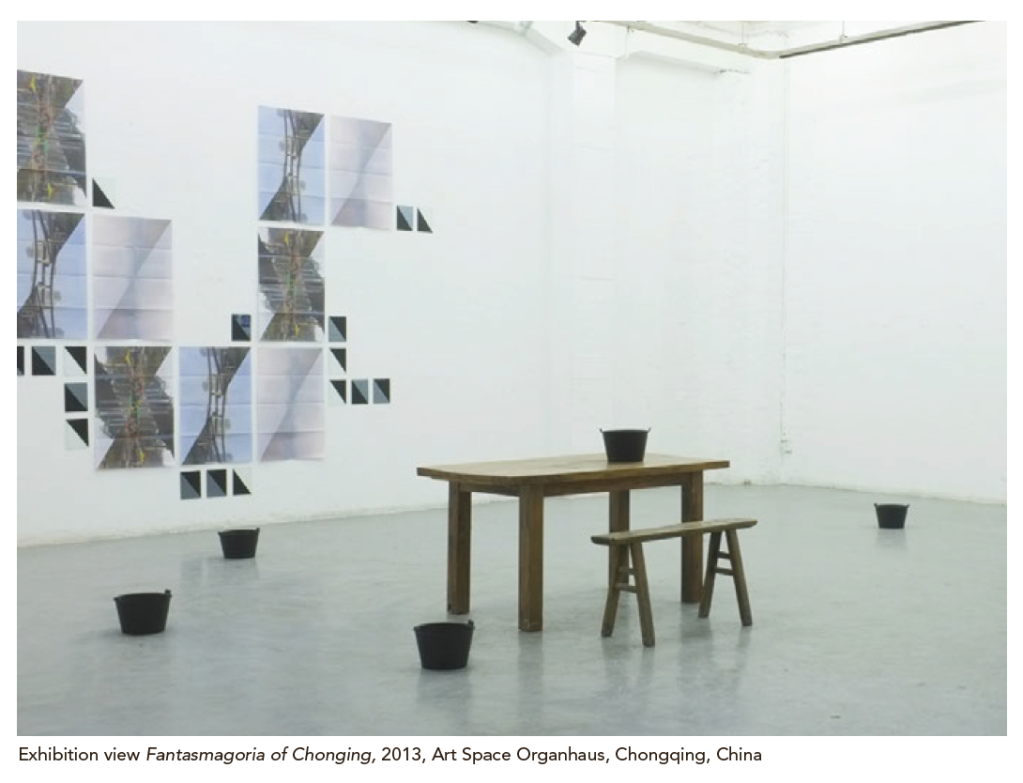
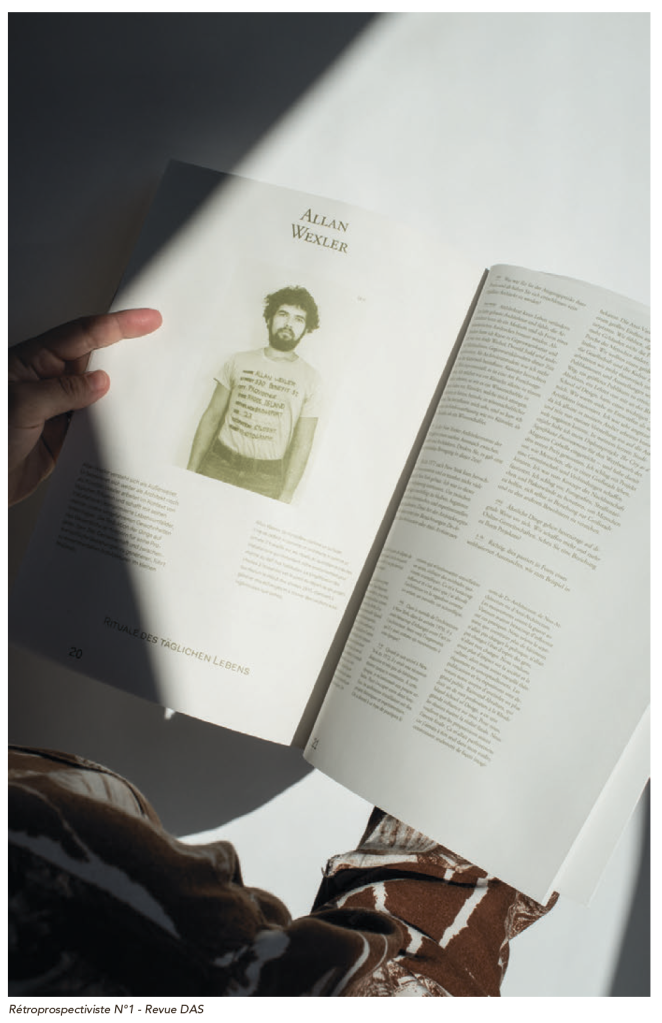
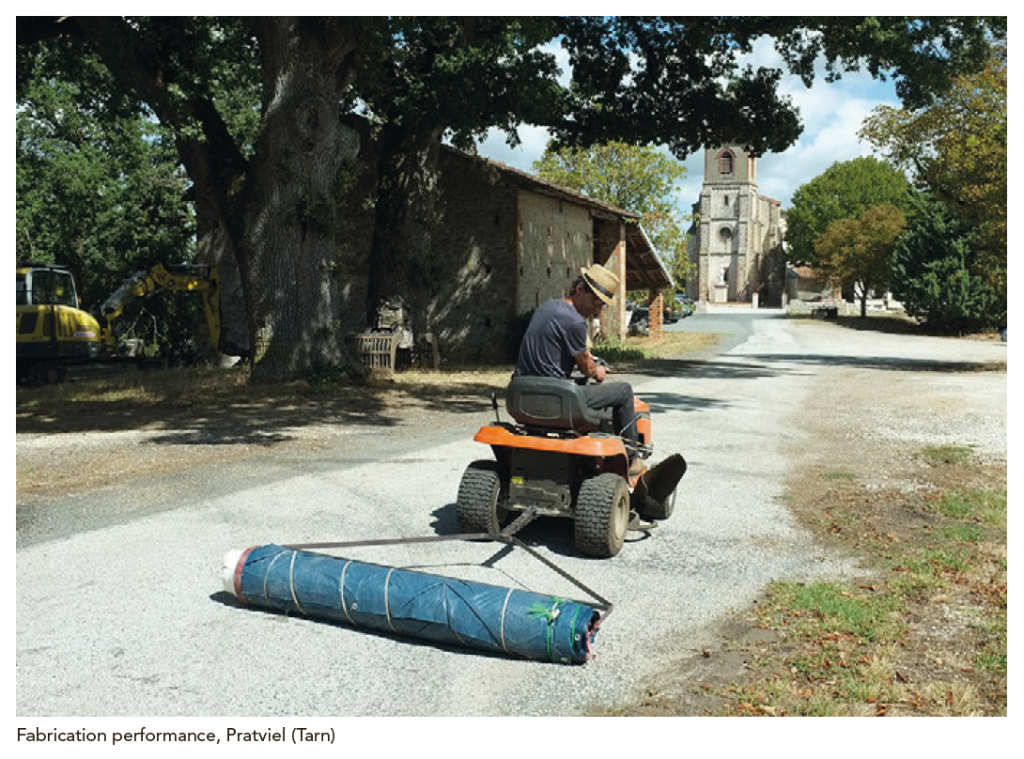
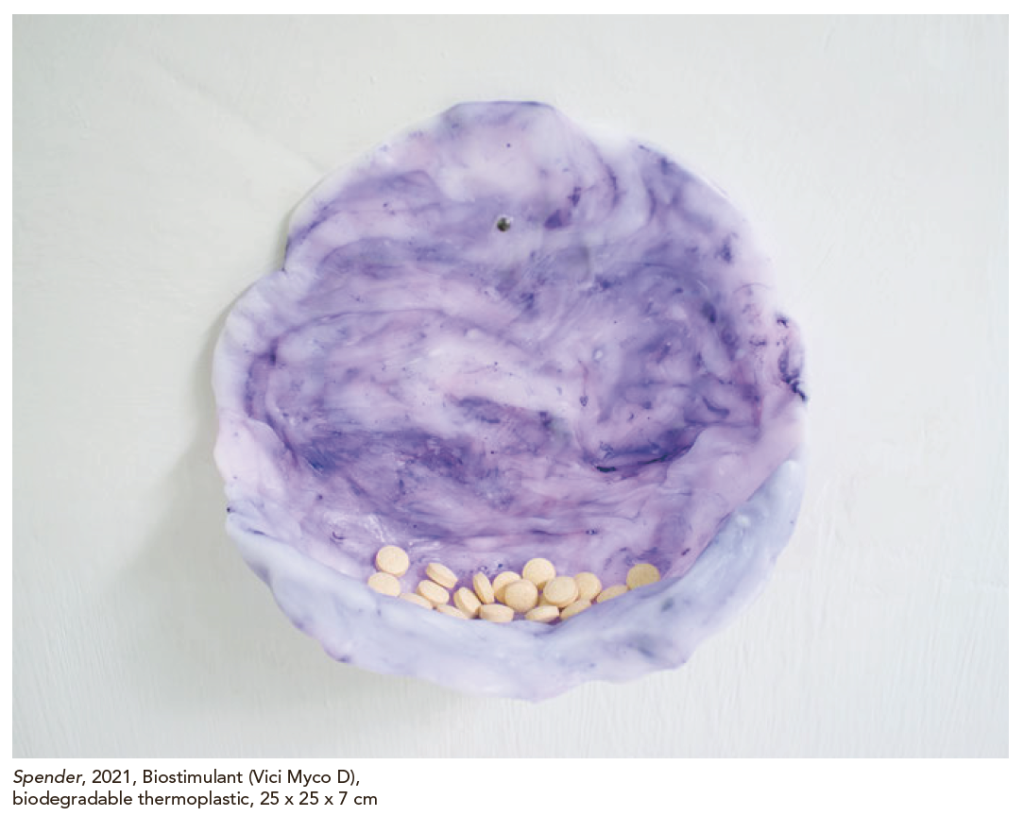
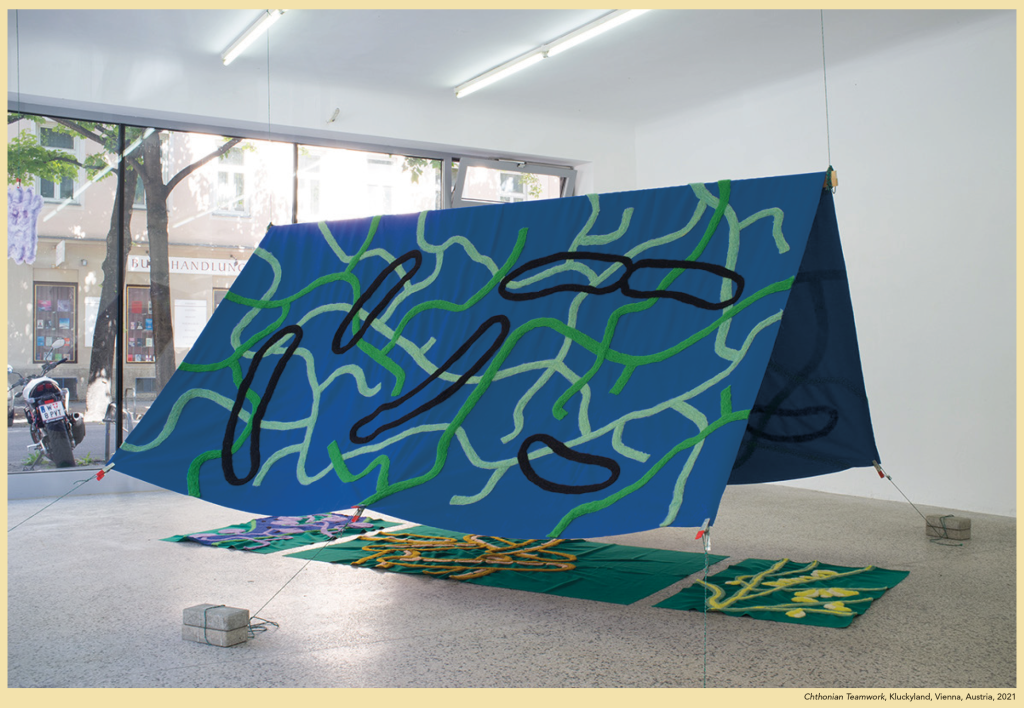
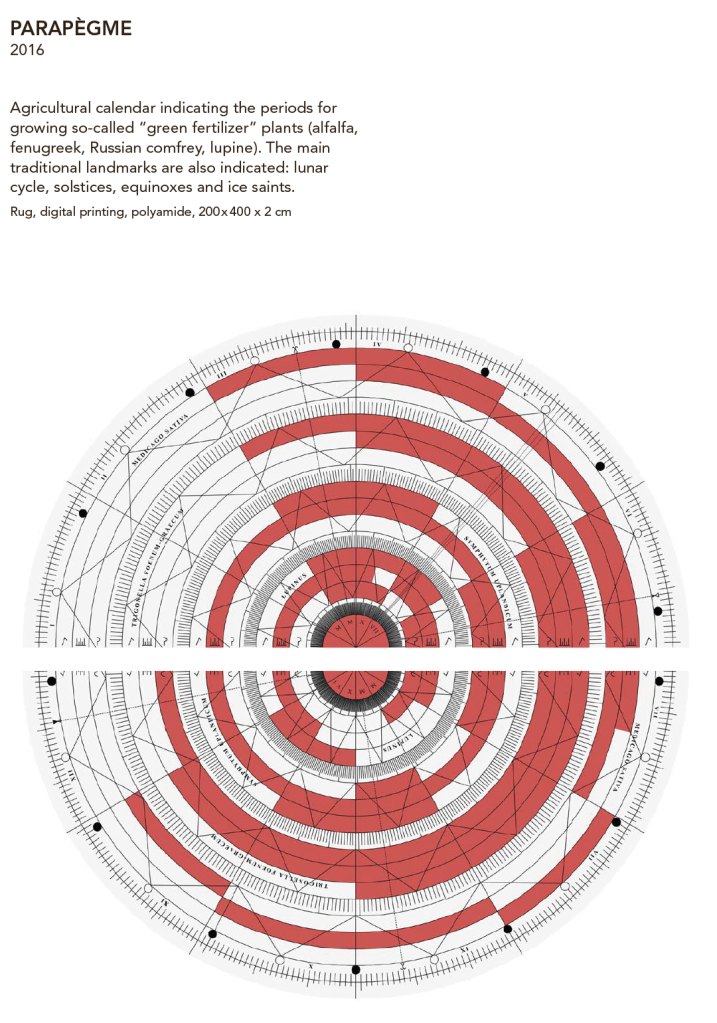
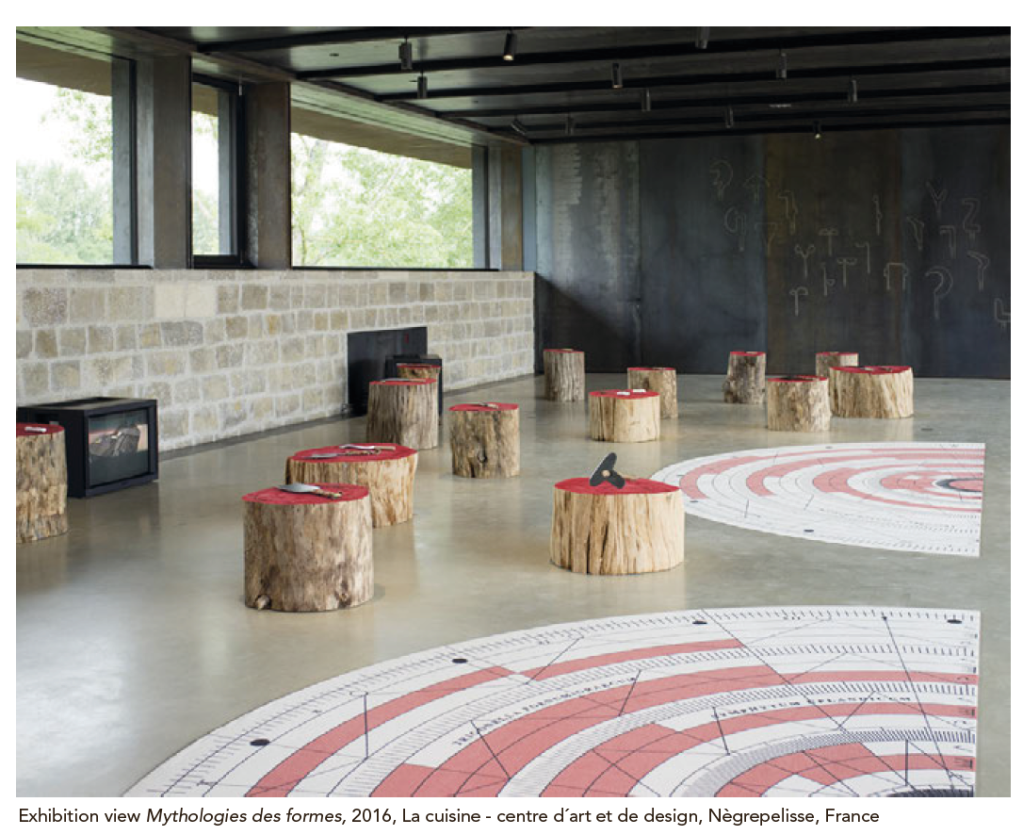
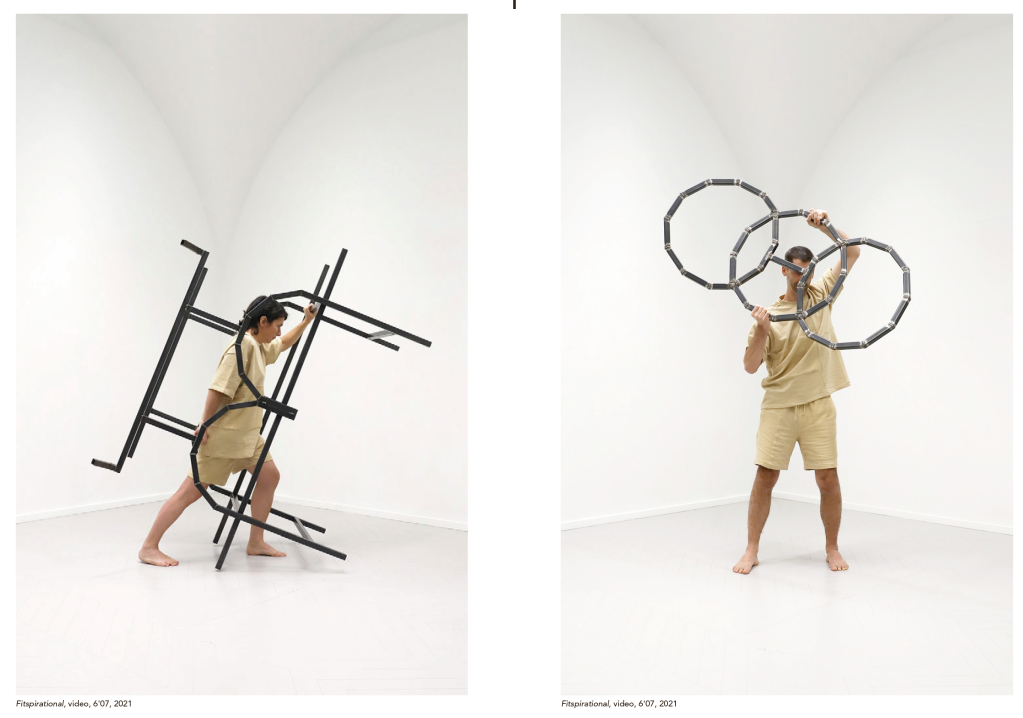
Talking Stones Open Call [CLOSED]
ONLY A FEW DAYS LEFT TO APPLY FOR THE OPEN CALL FOR THE TALKING STONES RESIDENCY
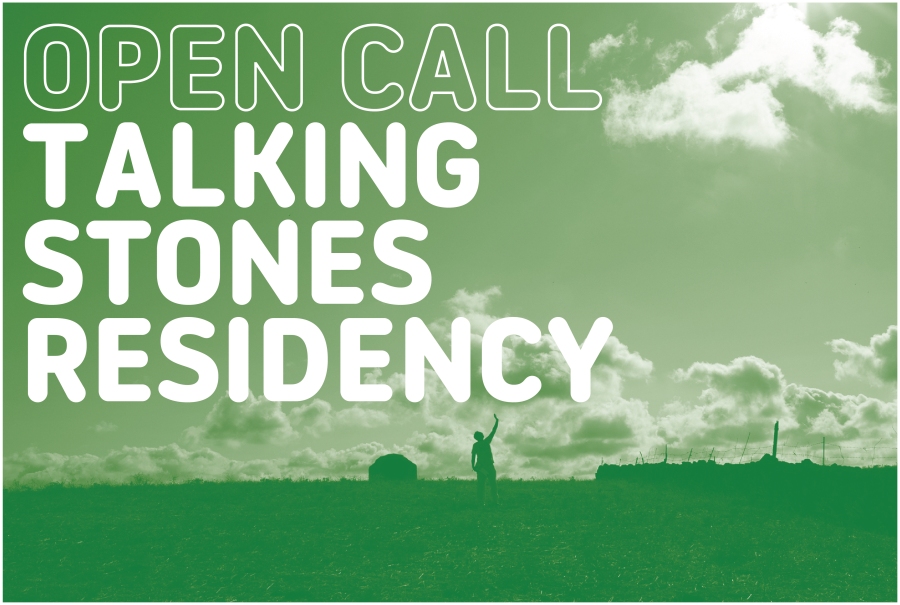
EN
Title: TALKING STONES / Castelo Branco – Portugal
Andres’ residency extends from MALPARTIDA to CASTELO BRANCO with 2 other artists to explore cross-border or transhumance routes and paths. This residency includes a workshop for the public. The 2 other artists are selected by Open Call.
Summary: The Extremaduran artist Andrés Talavero proposes a project of observation, evaluation and documentation of the landscape that will enable the creation of works “in situ” and performative actions during a route alluding to transhumance. In Castelo Branco 3 artists (Andres Talavero and 2 artistes selected by Open Call) are supposed to explore walking routes within a maximum radius of 30 km from the city of Castelo Branco.
These itineraries will take place in July with a stage lasting around 10 days. The artistes can invite public from the places they explore to participate. They will obtain from this experience works of art in various formats: photographs, field notebooks, collages, poems/narratives, video/audio documents, instalations, performance, etc.
ES
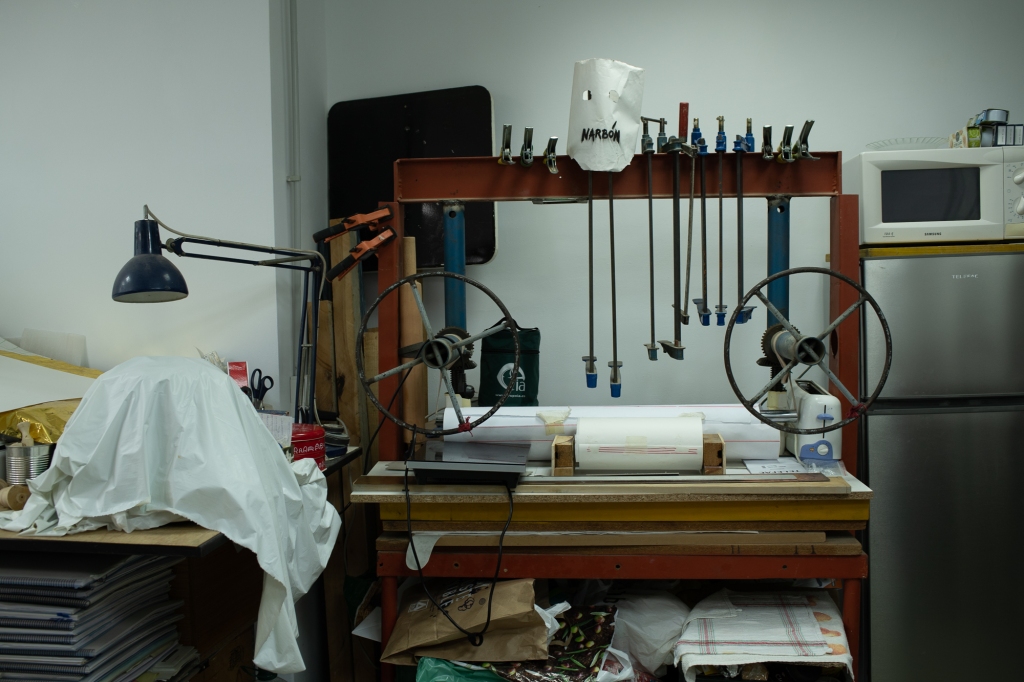
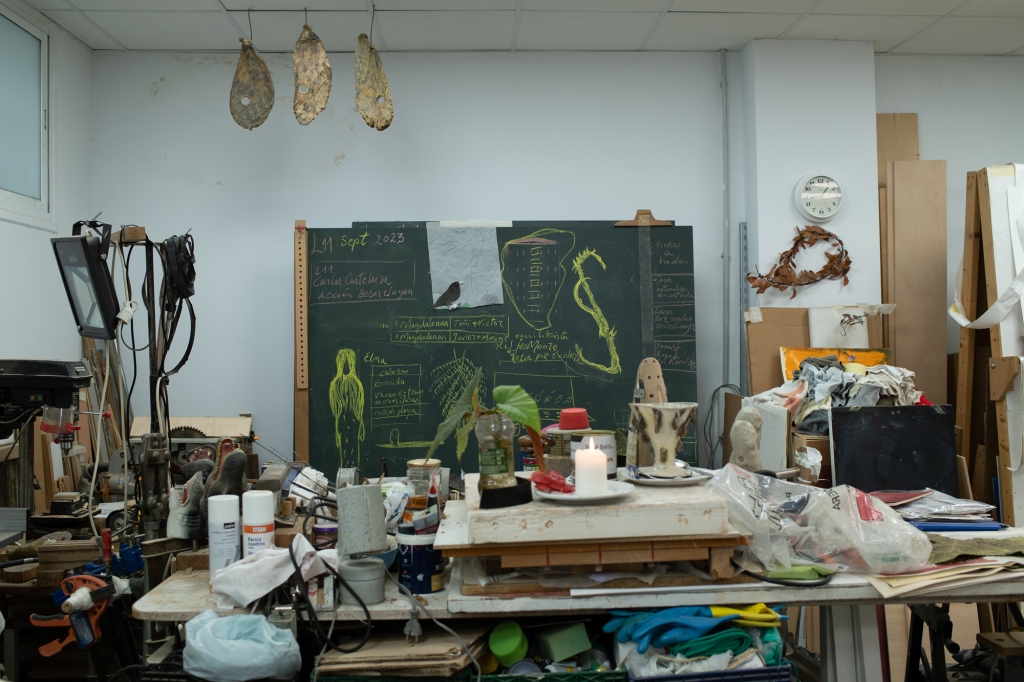
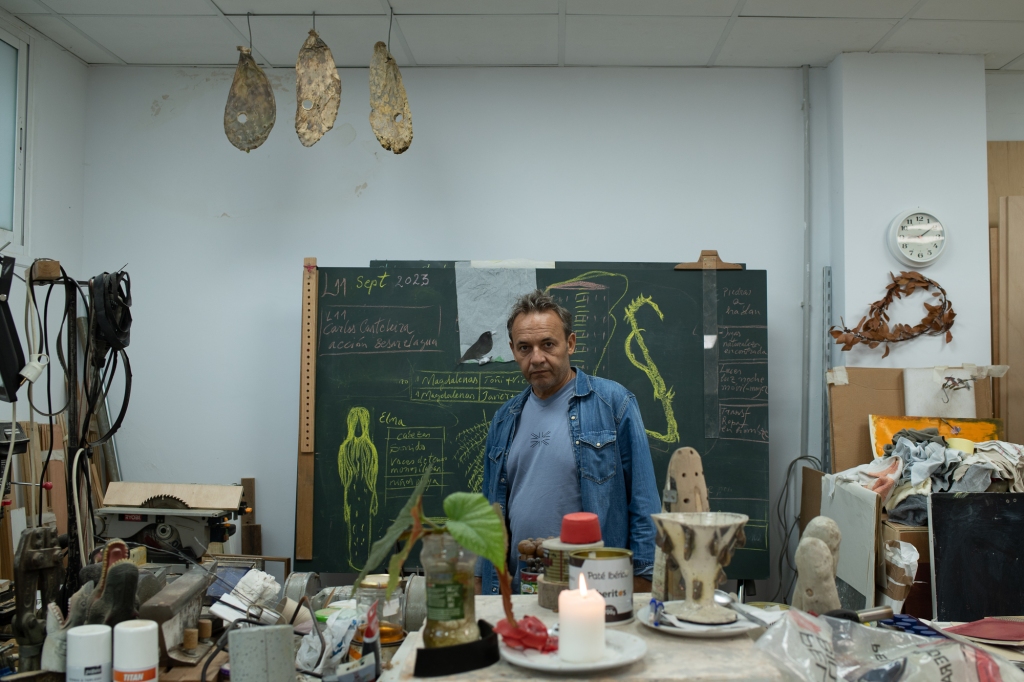
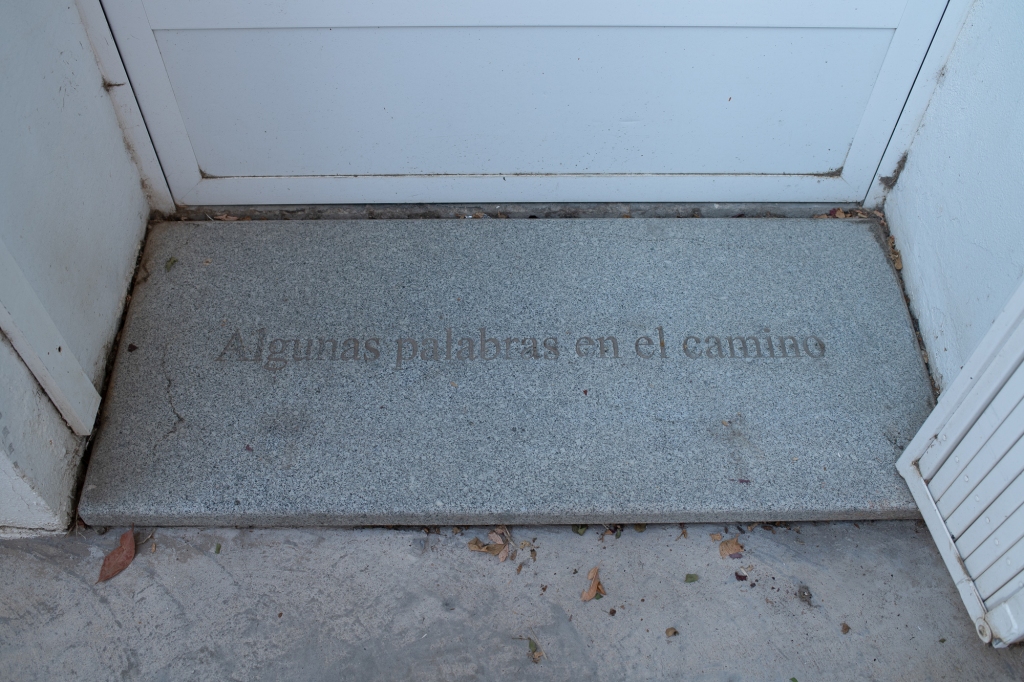
Título: PIEDRAS QUE HABLAN / Castelo Branco
La residencia de Andres se extiende desde MALPARTIDA hasta CASTELO BRANCO con 2 otros artistas (seleccionados por Open Call) para explorar rutas y caminos transfronterizos. Esta residencia incluye talleres para el público.
Resumen: El artista extremeño Andrés Talavero plantea un proyecto de observación, evaluación y documentación del paisaje que posibilitará la creación de obras “in situ” y acciones performativas durante un recorrido alusivo a la trashumancia. En Castelo Branco los 3 artistas (Andres Talavero y los 2 artistas selecionados por Open Call) proponen explorar rutas a pie en un radio máximo de 30 km de la ciudad de Castelo Branco.
Estas rutas tendrán lugar en una semana. Los 3 artistas invitarán al público local a participar y obtendrán de esta experiencia obras de arte en diversos formatos: fotografías, cuadernos de campo, collages, poemas/narrativas, documentos de vídeo/audio, etc.
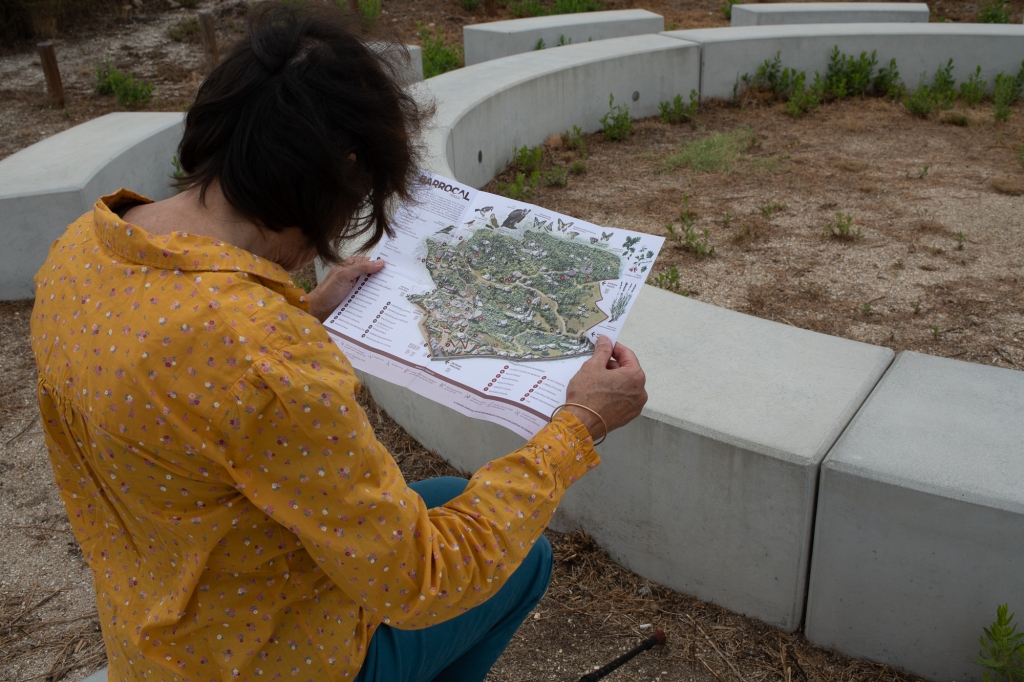
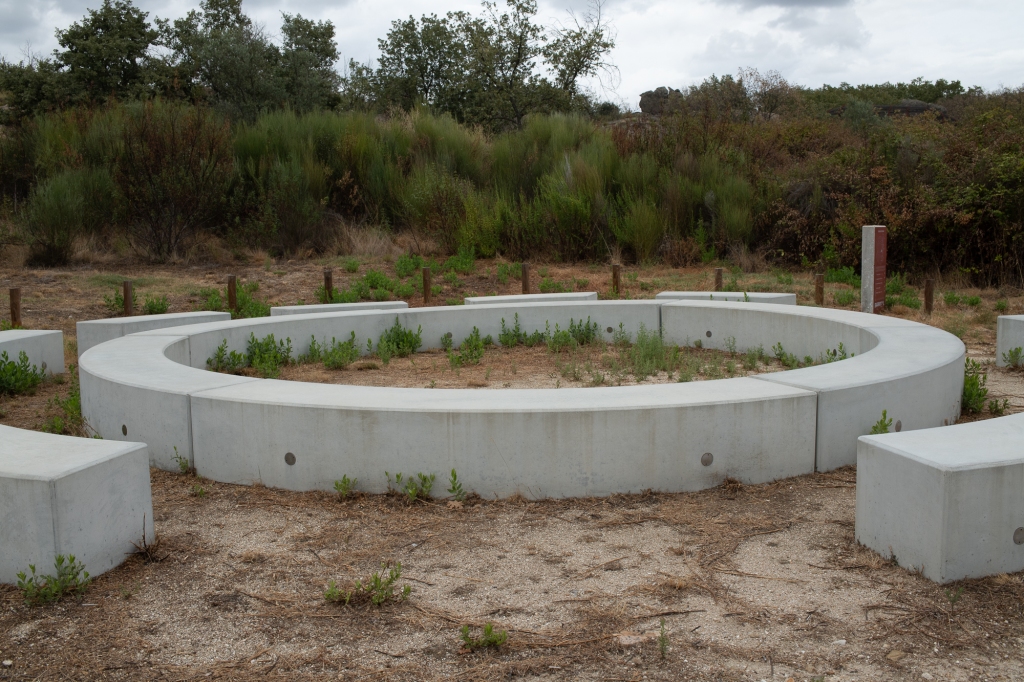
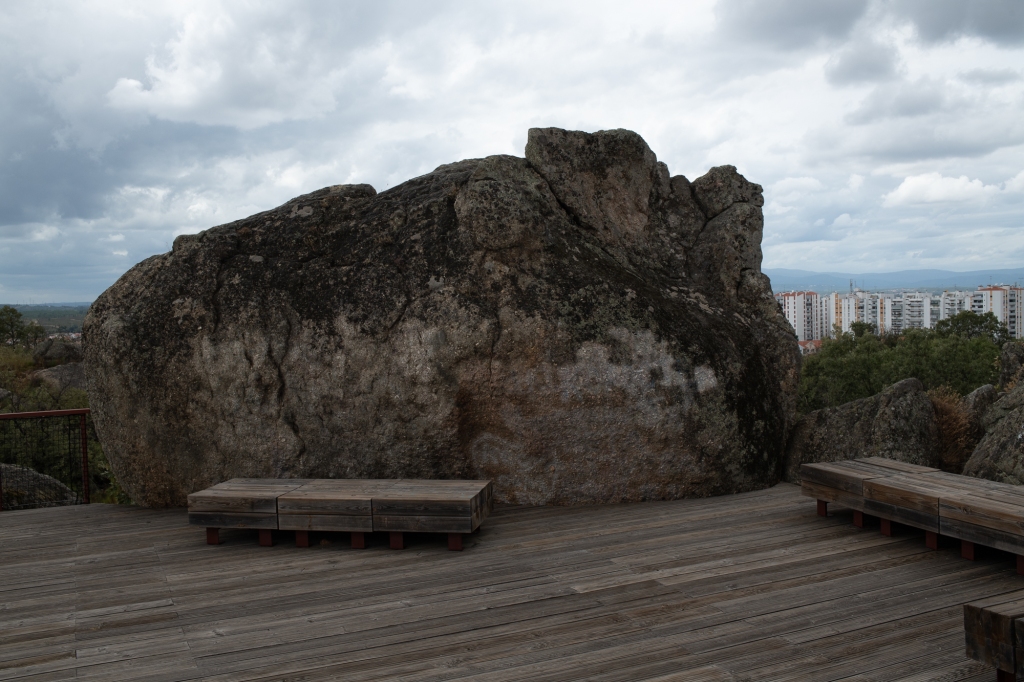
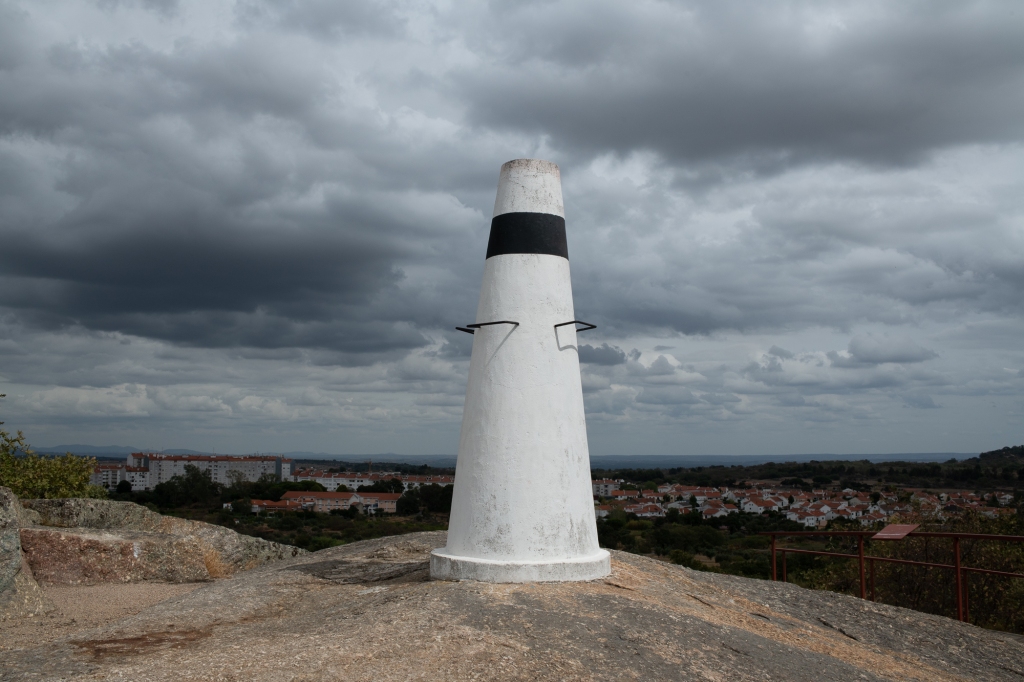
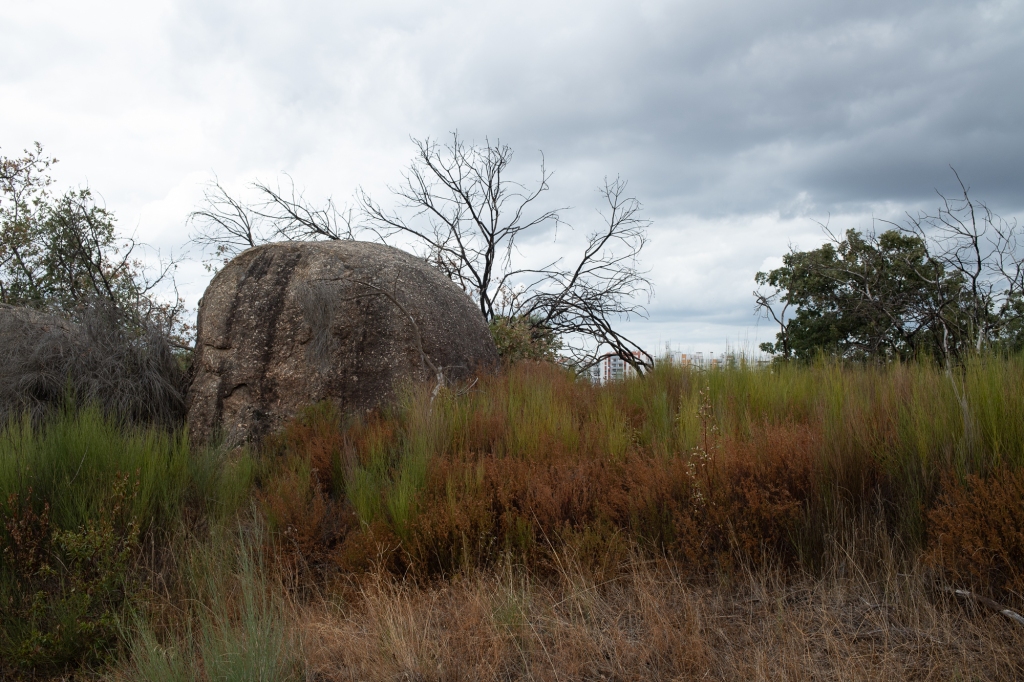
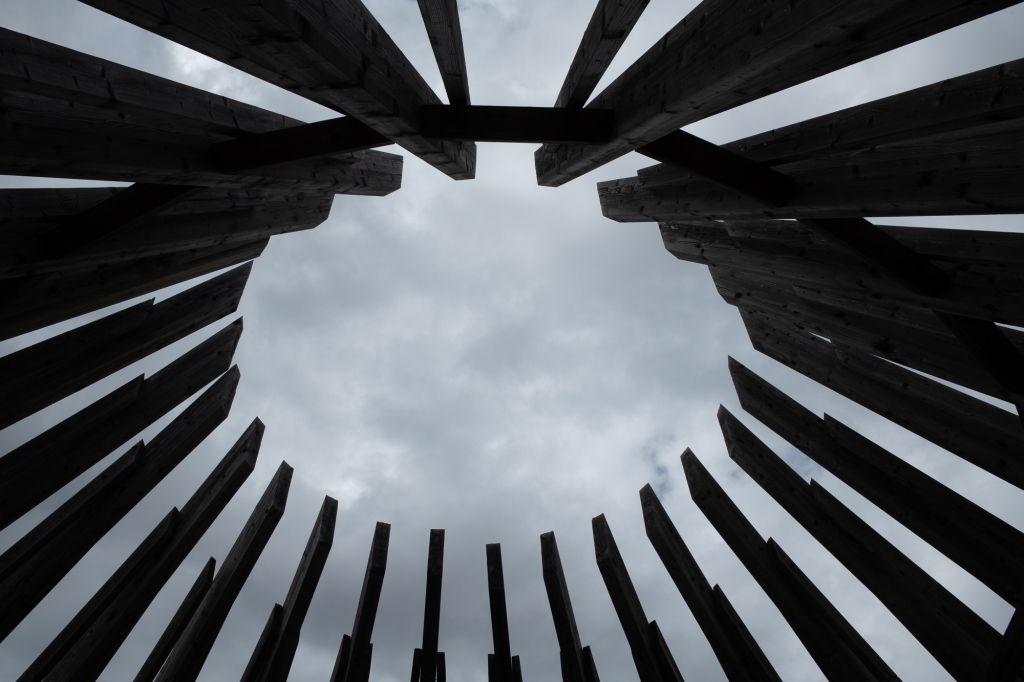
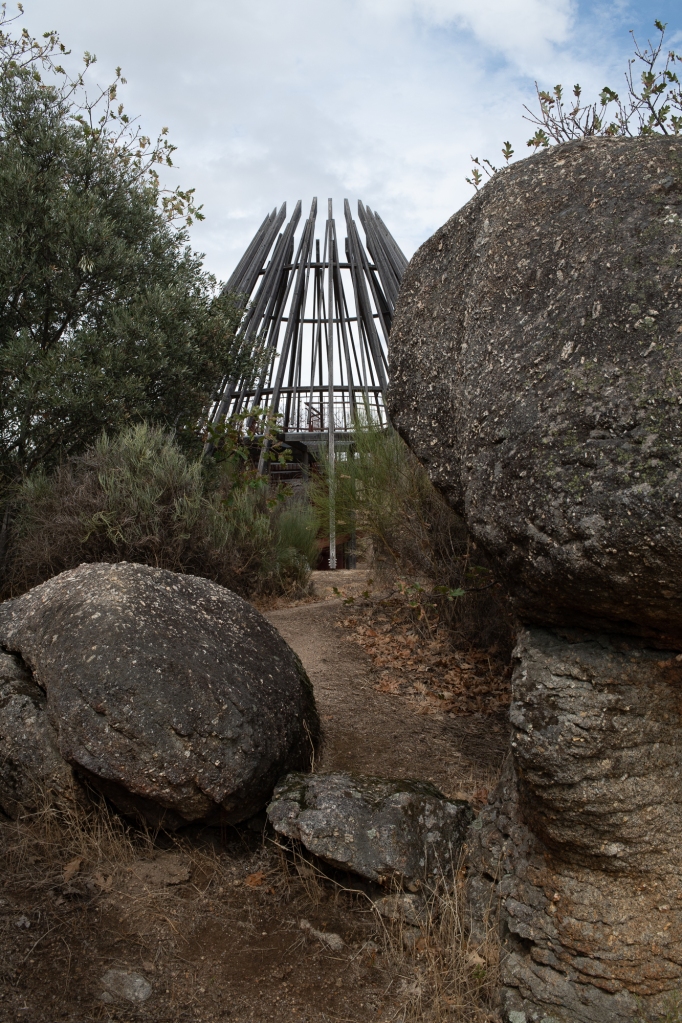
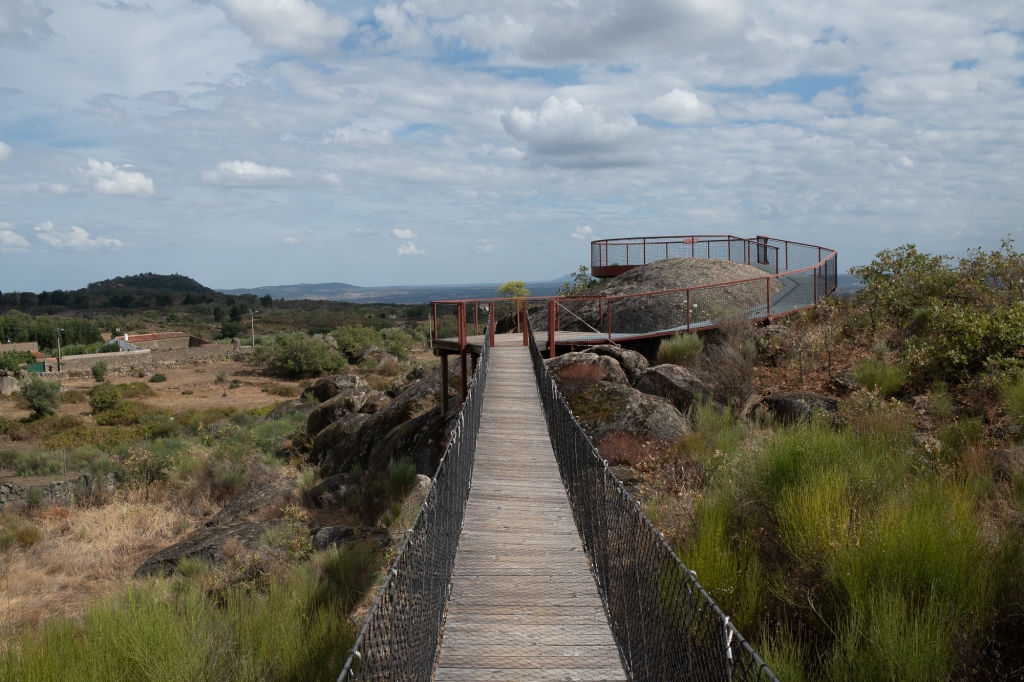
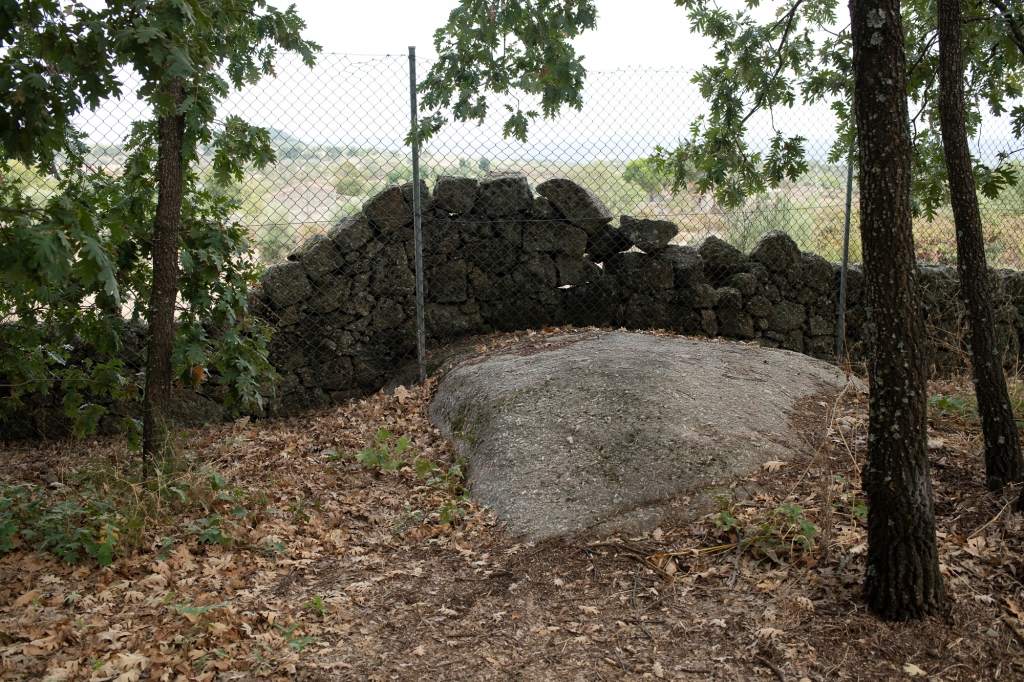
News Letter 1
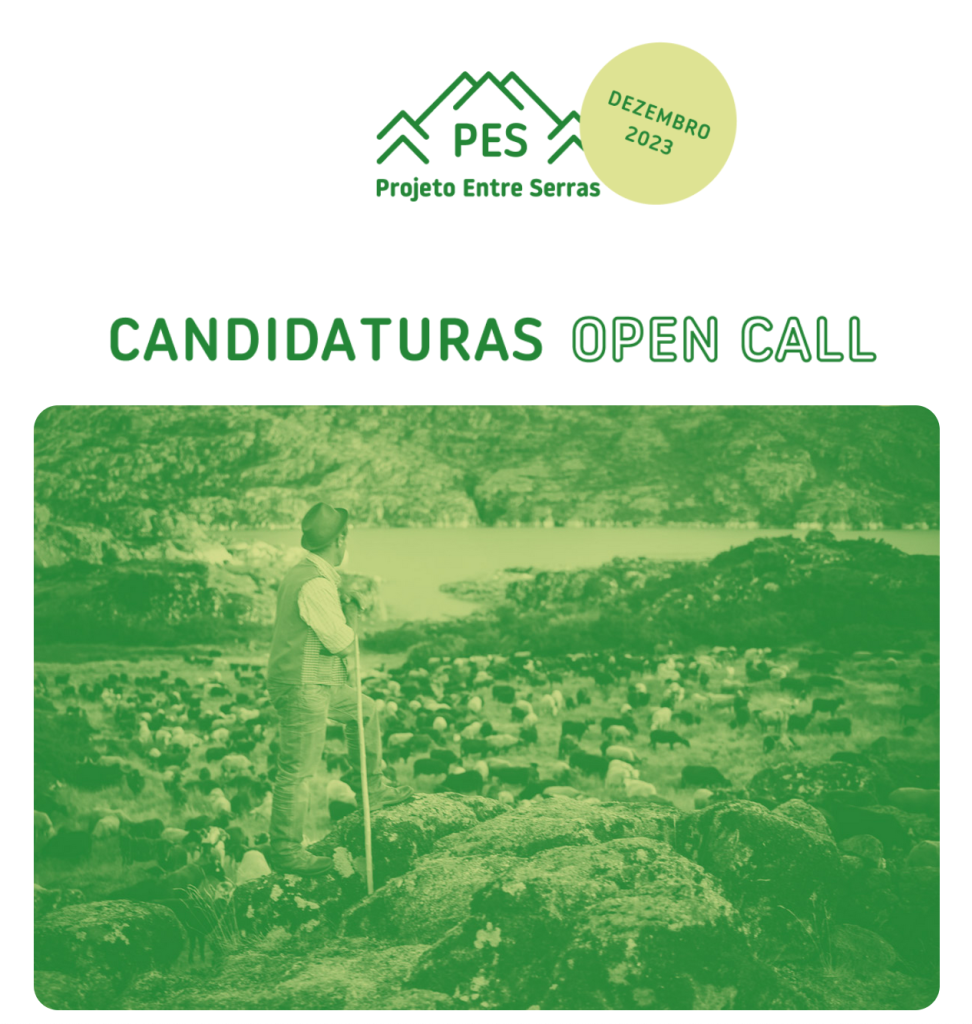
Workshop Alpes
Expérience du paysage à Auzet
Écouter notre émission plateau radio du jeudi 16 novembre 2023 ici
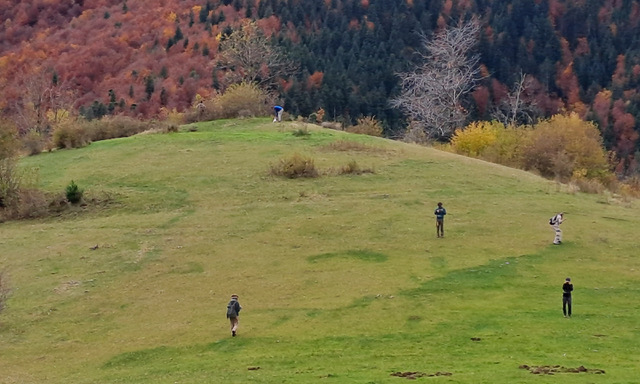
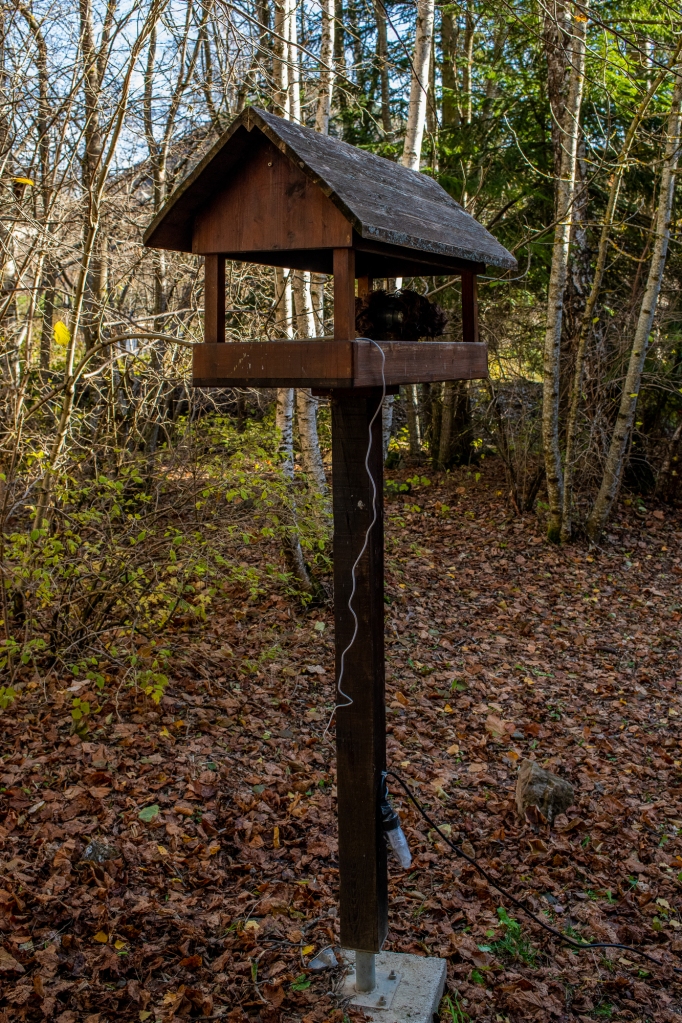
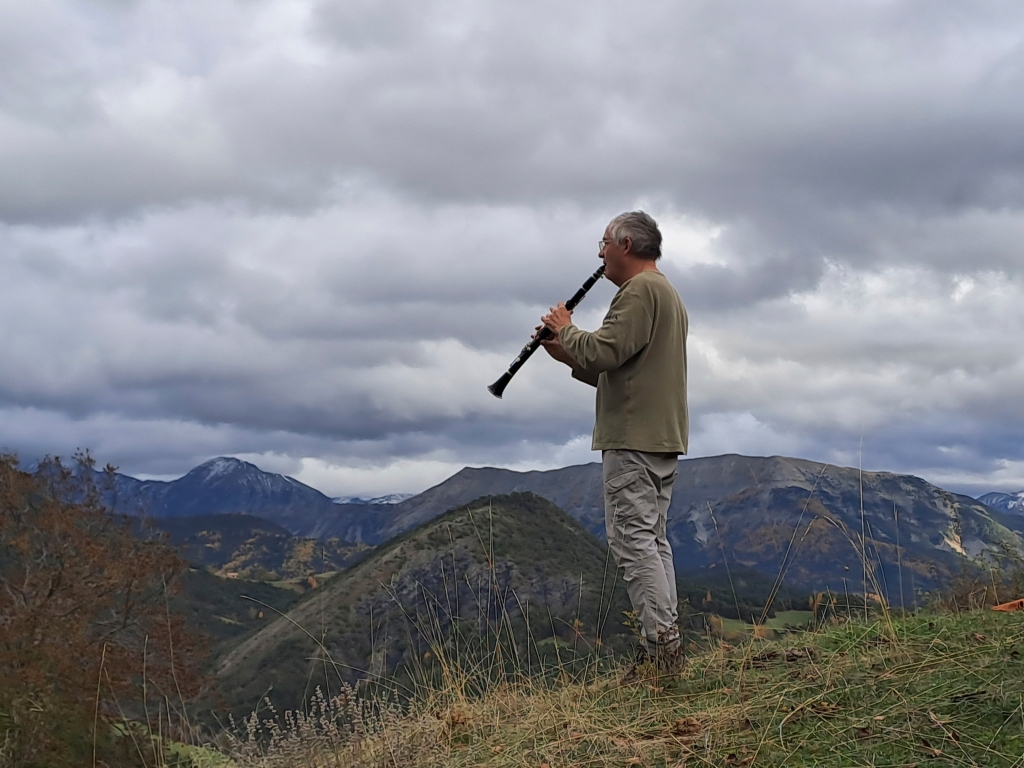
Entre le 13 et le 17 novembre, 10 étudiants de A3, A4, A5 et un étudiant de l’Institut Polytechnique de Lisbonne (Coordination du PES Europe Creative) prolongent la résidence artistique initiée en avril 2023 dans les Alpes. Cette fois-ci ils présentent leur projet personnel autour des thématiques proposées et explorent le village d’Auzet dans les Alpes-de-Haute-Provence sous divers angles (paysage, anthropologie, culturel et sociale, géologie, écosystème, territoires de montagne). La question des relations entre vivants et milieux est ainsi posée suivant différentes perspectives. Les résultats de ce workshop seront montrés lors de la deuxième édition de Campagne Première (art et ruralité) en septembre 2024 en Arles.
Cette action est la continuité du workshop ALPES (avril 2023) entre St. Jurs et Auzet. L’expérience du paysage et la toponymie à Auzet, entre Digne-les-Bains et Seyne les Alpes dans la vallée du Bès, construisent, avec la rencontre des habitants du village, les propositions de travail. Un micro ouvert de Locus Stream est installé en partenariat avec la Fontaine de l’Ours. Deux marches sonores et sensorielles ont été mises en place avec les habitants du village. La dernière soirée jeudi 16 novembre, lors d’un plateau radio animé par Cédric Parizot, avec les intervenants invités chacun restitue son expérience de la semaine à Auzet.
Micro Locus Stream de la Fontaine de l’Ours à Auzet. Écoutez ici.
WORKSHOP ALPES
This workshop aims to explore the territory of the Alpes de Haute Provence and the daily life of its inhabitants and their way of life in the mountains. Relationships with local communities, shepherds, farmers, workers, craftsmen and mobile inhabitants, visits to various sites, experiencing with all senses… all will be worked out in relation with the environment. Special attention is paid to seemingly contradictory notions of local versus global, rural versus urban, and also to displacements in the territory. From the living to the geological, from gardening to wilderness, from home to pastureland, shepherds and other residents will guide our steps. Links with the city and tourism, as much as any other interaction, are considered artistic material. There will be an encounter with artists exploring pastoralism and transhumance – Draille and Beyond the Country – Till Roeskens and Elsa Noyons. Visits to the Maison Musée Alexandra David-Neel, the CAIRN (Centre d’Art Informel de Recherche sur la Nature) and the Musée Gassendi are planned (works by A.Goldswothy, R.Nonas, Paul-Armand Gette, herman de vries …)
Preparatory weekends: 29-30 January and 24-25 March 2023. This workshop is led by Cairn and its co-artistic director Charles Garcin. The Cairn, Gassendi Museum and Alexandra David-Neel House make up AMBULO, a structure of the commune of Digne les Bains. The Gassendi Museum project, led for over 20 years by Nadine Gomes, has become an emblematic project of artistic action in rural and mountain areas (A. Goldsworthy, herman de vries, Paul Armand Getty, Richard Nonas and many artists have already collaborated with this project).
Une action du Projet Entre Serras (PES) soutenu par le Programme Europe Créative de la Commission européenne, le projet « La recherche par l’écoute » de Locus Sonus Vitae soutenu par l’accord-cadre ministère de la Culture CNRS et le CAIRN Centre d’Art.
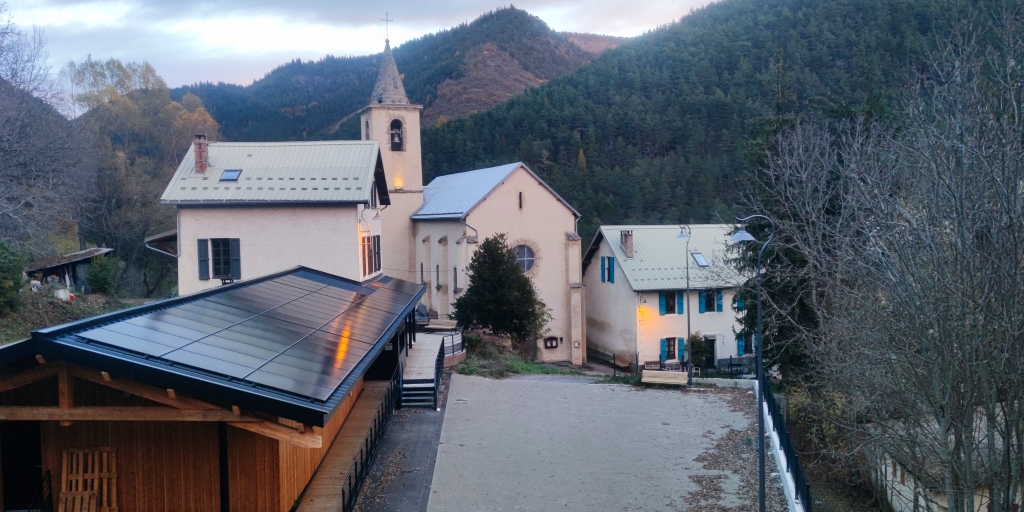

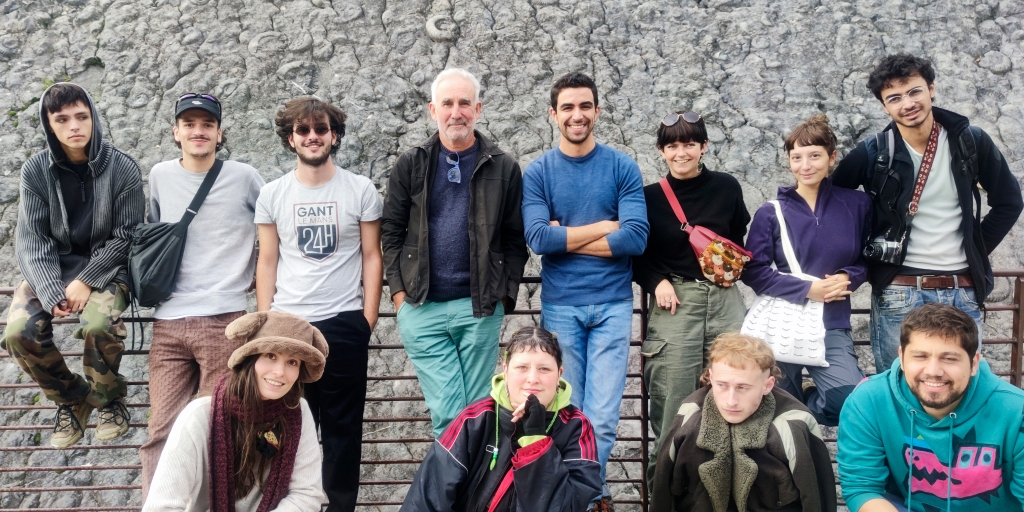
ASTRONOMIA
Artistic Residency (FR, PT)
Katarina Petrović https://www.katarinapetrovic.net/
Artistic Residency in Alpes de Haute Provence, UNESCO Estrela Géopark and Fajão (Aldeias do Xisto).
Summer 2023 and Summer 2024.
This Residency combines art and science in different locations across two countries:
- Alpes de Hautes Provence (FR)
- Serra da Estrela (PT)
- Aldeias do Xisto (PT)
- Vale do Rossim (PT)
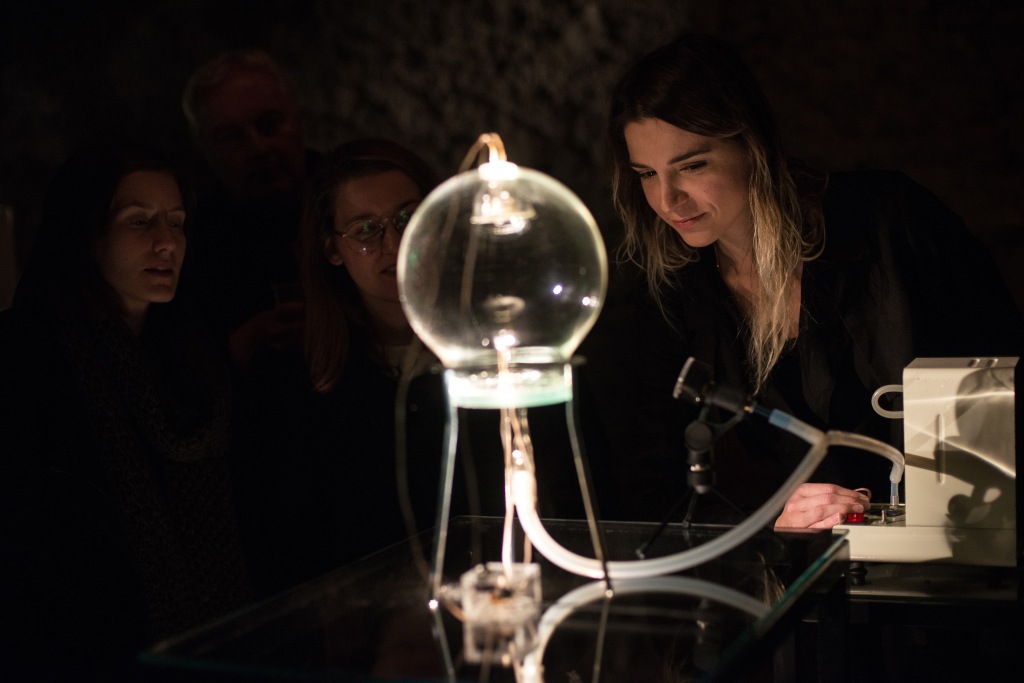
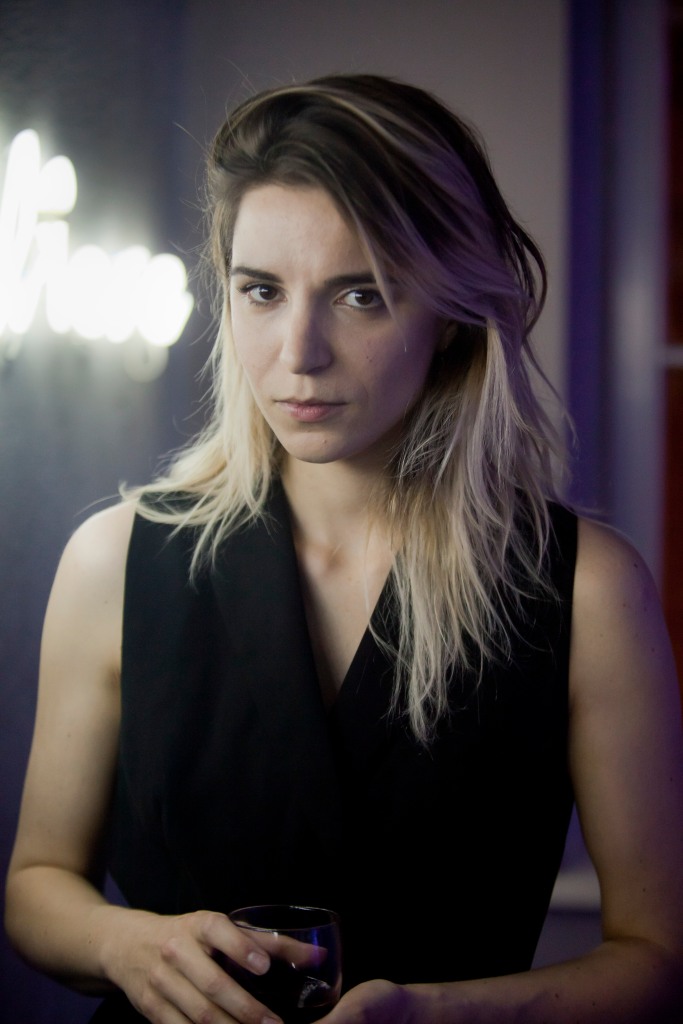
Katarina Petrovic explores different locations. Astronomy and mountains will be her thread. This is a Residency in two countries (FR and PT), four locations, a total of 2 months of field work, a 2 years span (2024 and 2025). The art work produced will integrate several events: the exhibitions planned for Castelo Branco and/or Malpartida de Cáceres. In Portugal, the Residency will end with a guided walk open to the public to discover the Pirilampos (Fireflies) of Rossim (Serra da Estrela), an art work by Erik Samakh (PES2017).
Resultes will be presented at Mun.CB event (Sustainable tourism) in Castelo Branco (PT- July 2024) and ACROSS LANDSCAPE AGRICULTURE AND BIODIVERSITY, Campagne Première in Arles (FR – September 2024) and Final Seminar in Malpartida de Cáceres (ES – Spring 2025).
Project Entre Serras – Astronomia residency
Universally, mountains bear a unique character often considered sacred, either for their difficulty of access, the versatility of their nature or their vicinity to the skies. It is from their summits that we are the most physically able to take the necessary step back to sense our place into this world. Under our eyes, reliefs left by tectonic forces lay the remains of long-gone seas; lines between mankind and its environment are drawn; above our heads, fossil lights travel from far-away stars illuminating us among other non-perceptible phenomena.
Guided by scientific necessity and the growing attractivity of astronomical tourism, the construction of star observatories connects as much as it reveals the landscapes it dominates. Between land and sky, this equipment facilitates encounters. It is a liminal zone between two time horizons: a pastor’s sheep herd strolls on a trail trodden by centuries of ancient seasonal migrations while state-of-the-art technologies study exoplanets’ densities located light-years away from us. Hence, mountains have been and remain incredibly powerful inspiration sites where science, spirituality and philosophy meet one another. Therefore there we find artists. The Entre Serras Project institutions seizes this opportunity to bind new relationships between institutions from different European countries.
For the 3 years to come, Serbian artist Katarina Petrovic, living in the Hague (NDL) has been invited. Her work already involved astrophysicists’ expertise (and has an exhibition at the Belgrade’s observatory in Summer 2023) interrogates our links to science, art, philosophy and our relationship to the world.
The artist Katarina Petrović has been invited for the next working period. Based in The Hague, The Netherlands she works in the domain of artscience, often closely collaborating with scientists and astrophysicists. In June this year she released a solo exhibition at the Cultural Centre of Belgrade and a side programme at the Belgrade Astronomical Observatory where she presented the newest research on Airy Disc – light diffraction phenomena often used in astronomical observations. She will be continuing this research during the Entre Serras – Astronomia residency.
Katarina Petrović is a Serbian-Dutch artist creating process-based works that explore the relationship between language and natural phenomena. Interlinking art, science, humanities and technology, her practice focuses on creative processes – from cosmogony, cognition and creation of meaning to physics of sound, light and vacuum. Katarina holds a MMus degree from ArtScience Interfaculty, Royal Conservatoire and Royal Academy of Arts, The Hague and an MFA from the Academy of Fine Arts, Belgrade. In 2019 she was the winner of the Young Visual Artist Award for Serbia (Mangelos award). Katarina is a member and board chair of artist-run space Trixie and an affiliated researcher at the transdisciplinary research Center Leo Apostel (VUB) in Brussels where she started an ArtScience research group. Katarina often works as a guest lecturer and is currently teaching at ArtScience Interfaculty in The Hague and postgraduate School of Thinking (VUB) in Brussels.
Residency in Portugal :
– ALDEIAS DO XISTO :
https://darksky.aldeiasdoxisto.pt/pt/darksky/formacao/
– UNESCO GEOPARK ESTRELA :
https://www.geoparkestrela.pt/
Residency in France :
– CAIRN / Saint MICHEL OBSERVATORY
https://www.cairncentredart.org/fr/accueil/
Centre Astrologique de St Michel de l’Observatoire
• In Digne-les-Bains, a city resounding with Pierre Gassendi’s presence, philosopher and astronomist corresponding with Galileo, the Cairn art centre associates to Katarina’s project the CNRS researchers from the Saint Michel Observatory, where the first exoplanet was discovered in 1995.
• Founded in 2000 by Nadine Gomez-Passamar, a curator and geologist by training, Cairn emerged from an unprecedented encounter between the wild and mineral nature of the Alpes-de-Haute-Provence and artists who had come to discover its history and environment. The first contemporary art initiative in the département, the art centre is pursuing an extraordinary cultural programme based exclusively on long-term residencies for visual artists. This gives rise to two exhibitions a year and numerous off-site events. The artists invited by Cairn seek out the Provençal Alps and the Digne region to explore their areas of interest, rediscovering them through the prism of an unsuspected heritage. Positioning art at the crossroads with other disciplines present in the department (sports, science, agriculture, tourism, archaeology, etc.), the Cairn opens up debates and participates in a global reflection on the future of the Dignois region and, more generally, of development and culture in rural areas.
Le Cairn is part of the museums department of the town of Digne-les-Bains. As part of this, its contemporary artistic activities converge with the programming of the Musée Gassendi and the Maison Alexandra David-Neel in unexpected ways. It has an artist’s residence and a 130m2 exhibition space.
Le Cairn hosts internationally renowned artists such as Andy Goldsworthy, Lara Almarcegui and Hicham Berrada. Part of its programme supports experimental practices and emerging artists.
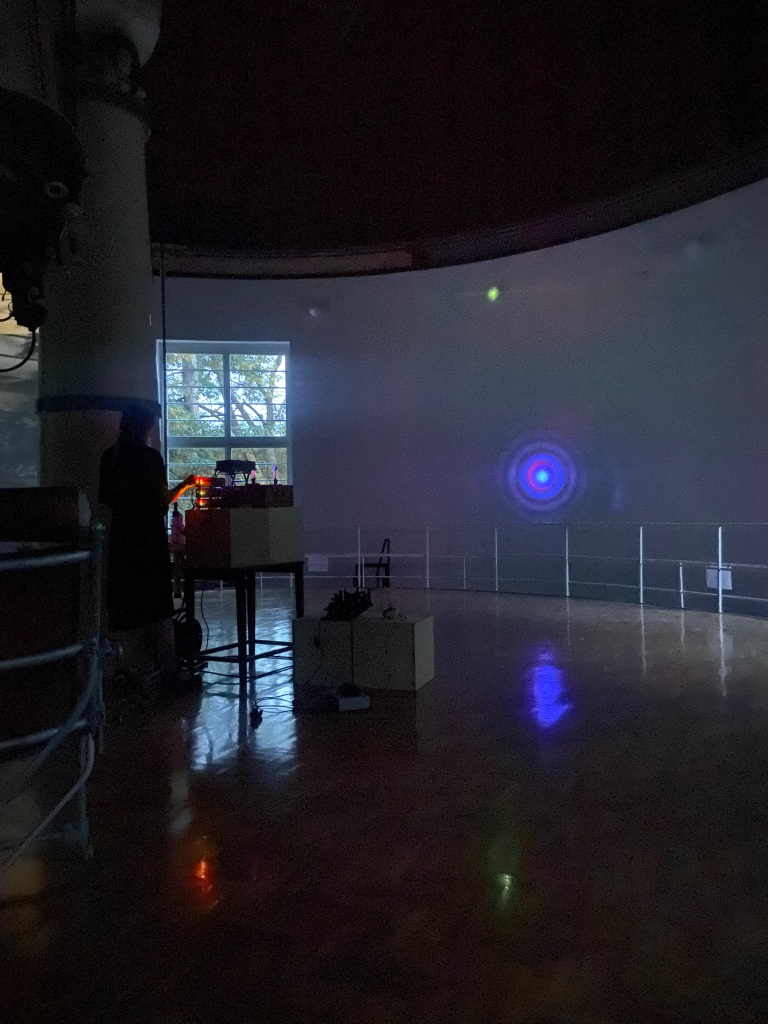
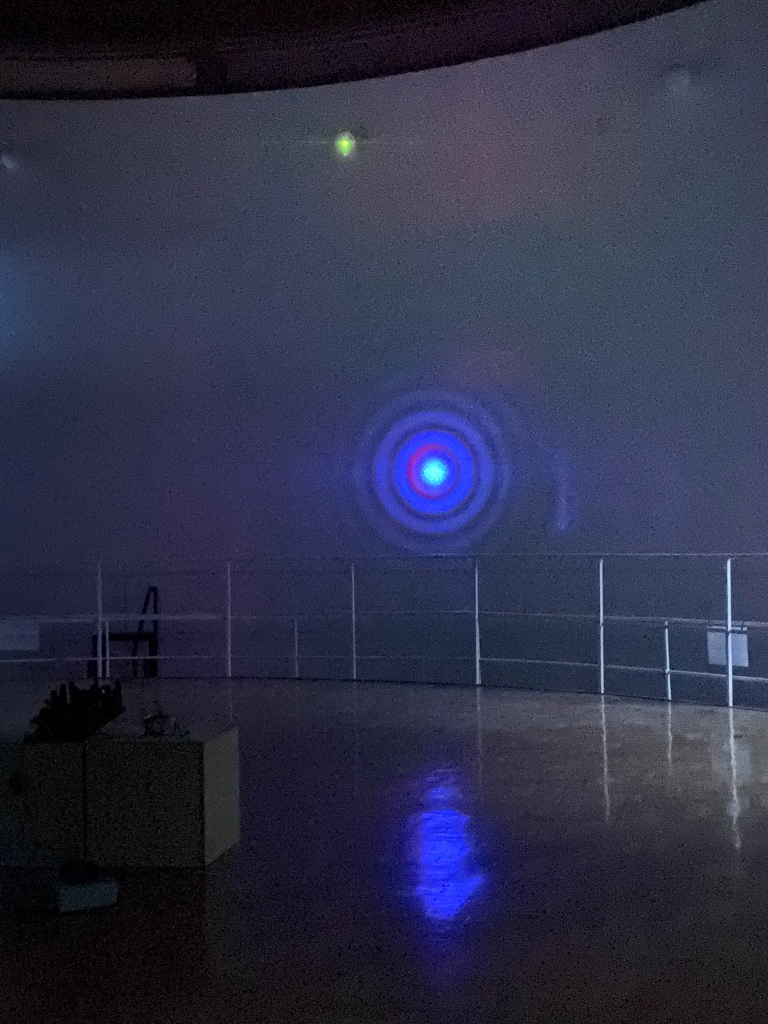
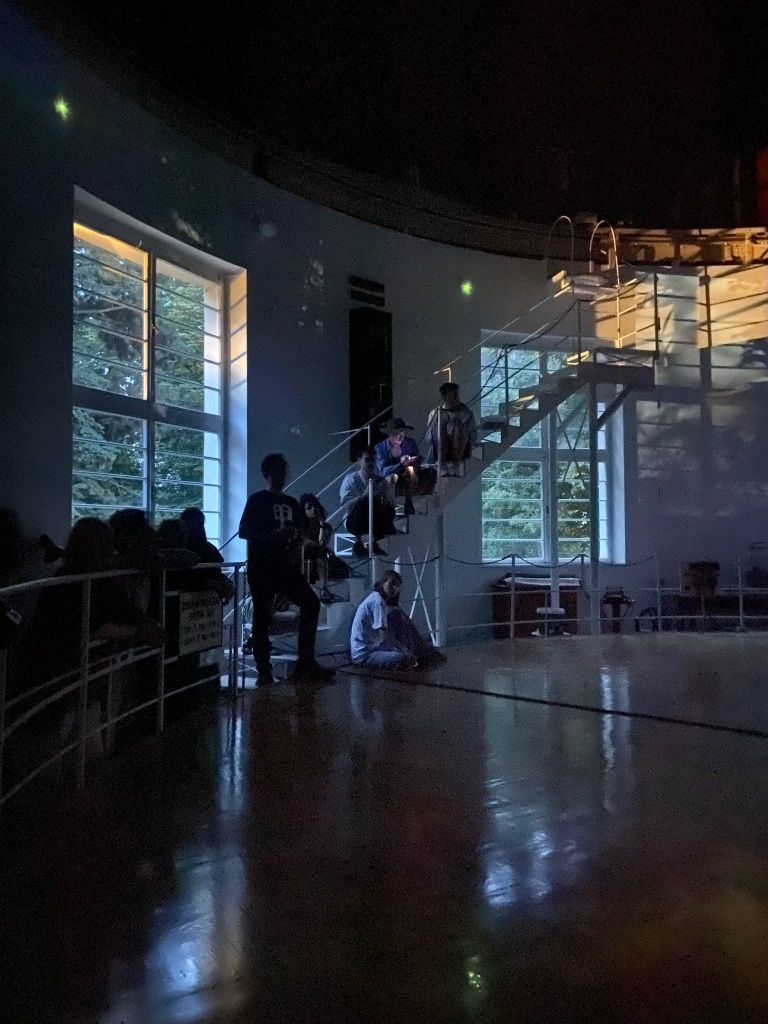
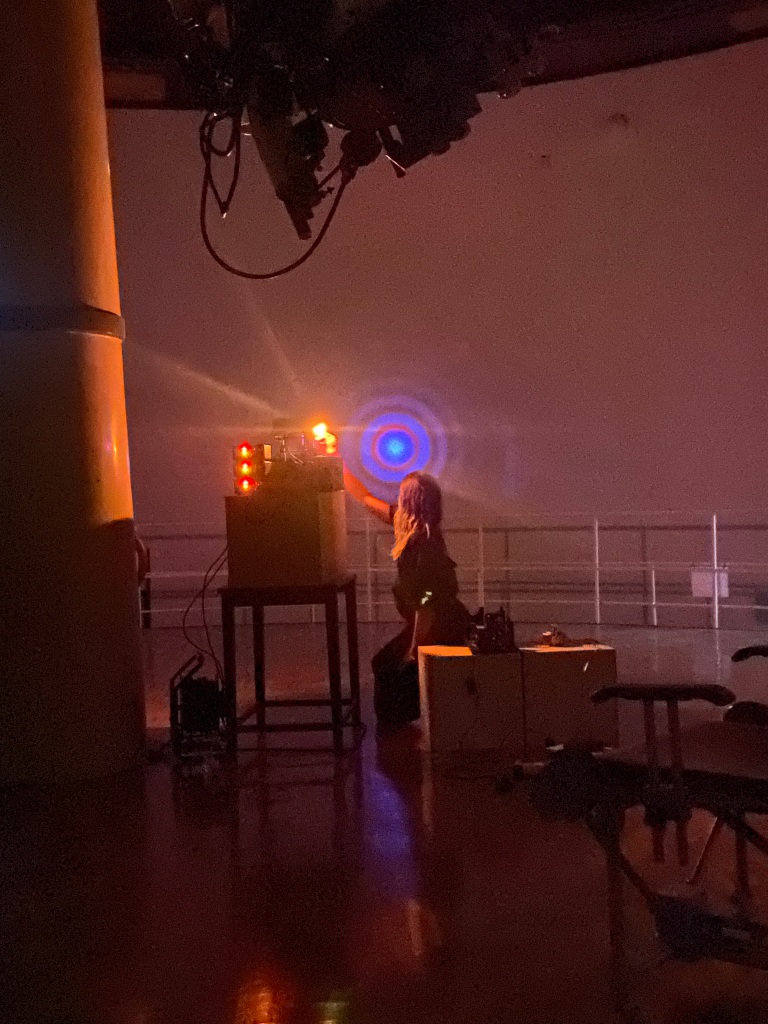
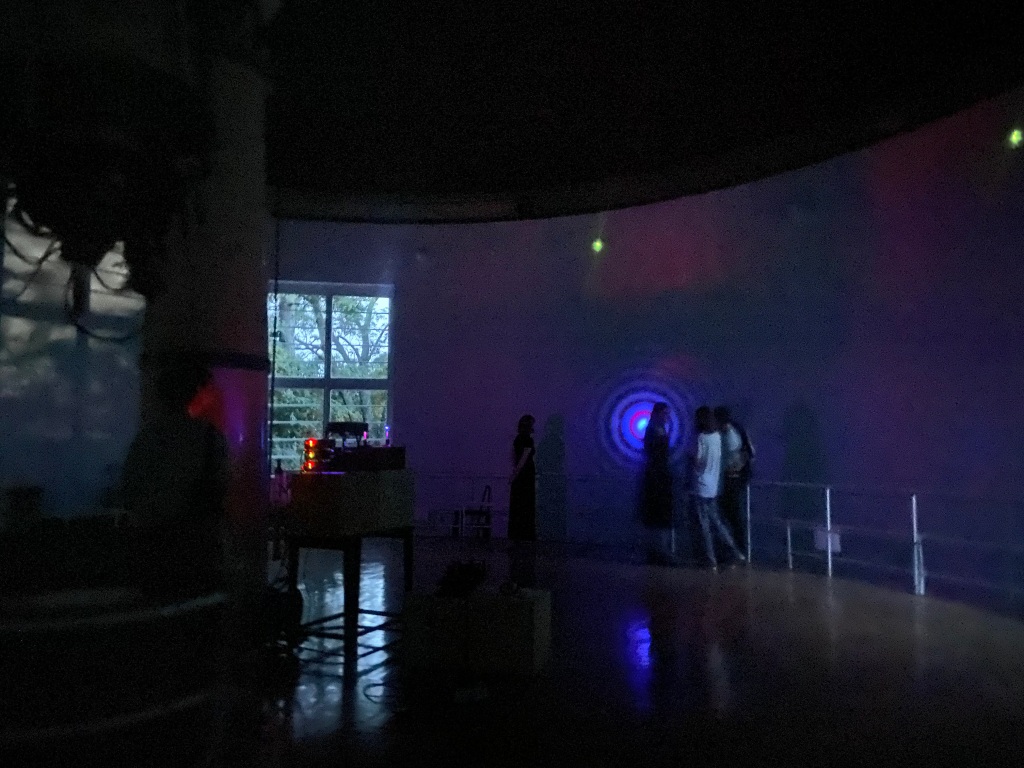
Project Entre Serras – Creative Europe
From 2023 to 2026, the Project Entre Serras Creative Europe (PES_CE) will host residencies, artistic workshops and seminars within the framework of the Creative Europe programme, revealing the potential of rural areas as a living laboratory, territories open to experimentation. The driving forces of PES_CE artistic actions are a quest to merge what we see as nature and what we see as communities, questioning the landscape, the border between urban and rural. Under the overall theme “Life and displacement in mountain territories”, PES_CE brings together partners from Portugal, Spain and France, to question the relationship between « seeing » and « experiencing » the landscape.
Moving around the world in an erratic way is the most primitive way of exploring the territory. With the Neolithic period, the domestication of plants (agriculture) and animals (grazing) generated two distinct types of space: the sedentary and the nomadic, the domestic and the wild. Since the 1970s, artists such as Richard Long, Hamish Fulton and Alberto Carneiro have made walking and the discovery of the territory their art. The idea of walking as an aesthetic form, a way of feeling, had already been suggested in the previous century by Henry David Thoreau, in a triple understanding of the act of walking across the landscape (action), of the path/line that crosses the space (object), and of the relation established with the space (the experience, a narrative). PES_CE adds here a particular interest in the separation between urban and rural, blurred by today’s technology and mobility. Its programme is based on in situ artistic experiments at the crossroads of theory, history and sensitive practices. The PES_EC questions the necessary rehabilitation of the sensitive world and the disastrous separation between Nature and Culture that we have witnessed in recent centuries.
How do those who live in or pass through the territory perceive it? The mobility of cultural agents and artists, of human and non-human actors, as well as institutional dynamics, are part of PES_CEs investigation of the territory. The project includes walks and collaborative actions that bring together artists and scientists, local residents and visitors. It also includes artists-in-residency, an online archive and visualization tool, debates and exhibitions. It is based on networking, research and co-creation.
The coordinator of the project is the Polytechnic Institute of Lisbon through its Landscape Museum (https://museudapaisagem.pt) (IPL). Also in Portugal are the partners Aldeias do Xisto (ADXTUR – Schist Villages), the Municipality of Castelo Branco (Mun.CB through its Creativity Factory) and the Geopark Estrela. The French partners are the Municipality of Digne-les-Bains in the Alpes de Haute Provence (CAIRN, Centre Informel de Recherche sur la Nature, CDLB) and the École Supérieure d’Art d’Aix-en-Provence (ESAAIX). The Spanish partners are the Museum Vostell Malpartida (MVM) and the Municipality of Malpartida de Cáceres (AMC, through its Centre of Livestock Trails).
Creative Europe is the European Union’s programme to support the cultural and creative sectors and has two objectives: to safeguard, develop and promote Europe’s cultural and linguistic heritage and diversity; and to increase the competitiveness and economic potential of the cultural and creative sectors. Until 2027, the programme invests in actions and initiatives to strengthen cultural diversity and address the needs and challenges of the cultural and creative sectors, with the aim of contributing to their recovery while enabling them to step up their efforts to become more digital, greener, more resilient and more inclusive.
La ligne du Côa à Fluxus
Linha do Côa a Fluxus : exposition du 03 au 18 décembre 14h à 18h
Espace 31, rue Consolat, 13001 Marseille
Entrée libre
Concerto para olhos vendados, Vale de Madeira, Luis Antero :
Tweet
PART 1 https://luisantero.bandcamp.com/album/concerto-para-olhos-vendados-vale-de-madeira-pinhel
PART 2 https://luisantero.bandcamp.com/track/parte-2-10https://luisantero.bandcamp.com/album/concerto-para-olhos-vendados-vale-de-madeira-pinhel

Les artistes et enseignants de l’École Supérieure d’Art d’Aix-en-Provence proposent une traversée du paysage de l’art rupestre du Vale de Côa au Portugal à l’art Fluxus du Musée Vostell Malpartida de Cáceres en Espagne (MVM).
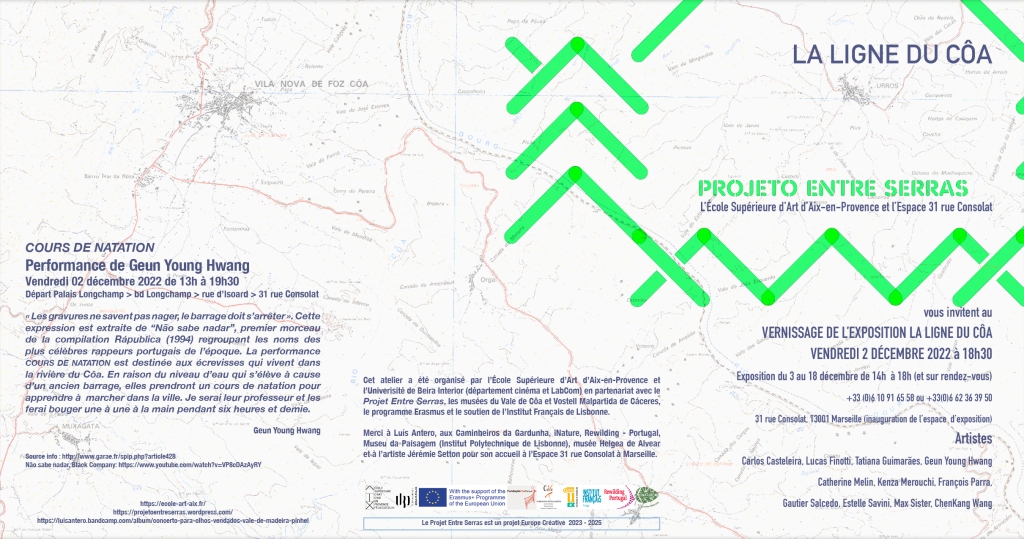
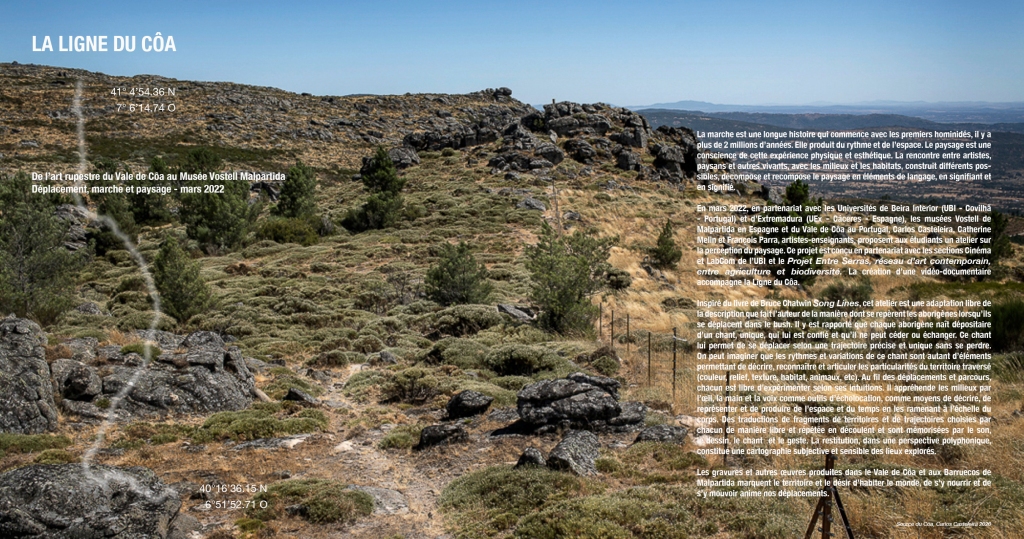
En Mars 2022, en partenariat avec les universités de Beira Interior (UBI – Covilhã – Portugal) et d’Extremadura (UEx – Cáceres – Espagne), les Musées Vostell de Malpartida (Es) et du Vale de Côa (Pt), Carlos Casteleira, Catherine Melin et François Parra proposent un atelier sur la perception du paysage. Une proposition d’exploration par le chant (voix), le geste (dessin), l’image (photographie et vidéo) et le déplacement des corps (performance). Conçu en partenariat avec les sections Cinéma, Media Artes et LabCom de l’UBI et le Projet Entre Serras, réseau d’art contemporain, entre agriculture et biodiversité. La création d’une vidéo-documentaire accompagne la Ligne du Côa.
Inspiré du livre de Bruce Chatwin Song Lines, ce workshop est une adaptation libre de la description que fait l’auteur de la manière dont se repèrent les aborigènes lorsqu’ils se déplacent dans le bush. Il y est rapporté que chaque aborigène nait dépositaire d’un chant, unique, qui lui est confié et qu’il ne peut céder ou échanger. Ce chant lui permet de se déplacer selon une trajectoire précise et unique sans se perdre. On peut imaginer que les rythmes et variations de ce chant sont autant d’éléments permettant de décrire, reconnaître et articuler les particularités du territoire traversé (couleur, relief, texture, habitat, animaux, etc.).
Ce moment proposait une appréhension de l’espace par l’œil et la main, par la voix et le chant comme outils d’écholocation, comme moyens de décrire, de représenter et de produire de l’espace en le ramenant à l’échelle du corps.
Des traductions de fragments de territoires et de trajectoires choisies par chacun de manière libre et répétée en découlent et sont mémorisés par le son ou le dessin, par la voix et le geste. L’ensemble est restitué dans une perspective polyphonique constituant une cartographie subjective et sensible des lieux explorés.
La marche est une longue histoire qui commence avec les premiers hominidés, il y a plus de 2 millions d’années. Elle produit du rythme et de l’espace. Le paysage est une conscience de cette expérience physique et esthétique. La rencontre entre artistes, paysans et autres vivants, avec les lieux de vie, les milieux et les habitats construits différents possibles, décompose et recompose le paysage en éléments de langage, en signifiant et en signifié.
Au fil des déplacements et parcours chacun était libre d’expérimenter selon ses intuitions en produisant différentes approches temporelles et spatiales du réel. La visite du Museo Vostell Malpartida a, pour finir, aiguisé notre appétit d’art. Une incursion à la Fondation Helga de Alvear nous a plongé dans les œuvres d’artistes contemporains qui ont fait de la marche et des paysages traversés des outils d’exploration et d’investigation des mondes. Les gravures et peintures produites dans le Vale de Côa et au Barruecos de Malpartida constituent des marqueurs de territoire mais c’est le désir d’habiter ces mondes, de s’y nourrir et de s’y mouvoir qui anime nos déplacements.
LA LIGNE DU CÔA | EXPOSITION
Du 3 au 18 décembre 2022, de 14h à 18h ou sur rdv au 06 10 91 65 58
Espace 31, rue Consolat, 13001 Marseille
Par Carlos Casteleira, Lucas Finotti, Tatiana Guimarães, Geun Young Hwang Catherine Melin, Kenza Merouchi, François Parra, Gautier Salcedo, Estelle Savini, Max Sister, ChenKang Wang
Entrée libre
Vernissage
Vendredi 2 décembre 2022 à 18h30
Entrée libre, sans réservation
COURS DE NATATION | PERFORMANCE
de Geun Young Hwang
Vendredi 02 décembre 2022, de 16h à 19h30
Départ Palais Longchamp > Bd Longchamp > R. d’Isoard > 31 rue Consolat
«Les gravures ne savent pas nager, le barrage doit s’arrêter », cette expression est extraite de Não sabe nadar, premier morceau de la compilation Rápublica (1994) qui regroupait les noms des plus célèbres rappeurs portugais de l’époque. La performance COURS DE NATATION est destinée aux écrevisses qui vivent dans la rivière du Côa. En raison du niveau d’eau qui s’élève à cause d’un ancien barrage, elles prendront un cours de natation pour apprendre à marcher dans la ville. Je serai leur professeur et les ferai bouger une à une à la main pendant trois heures et demie.
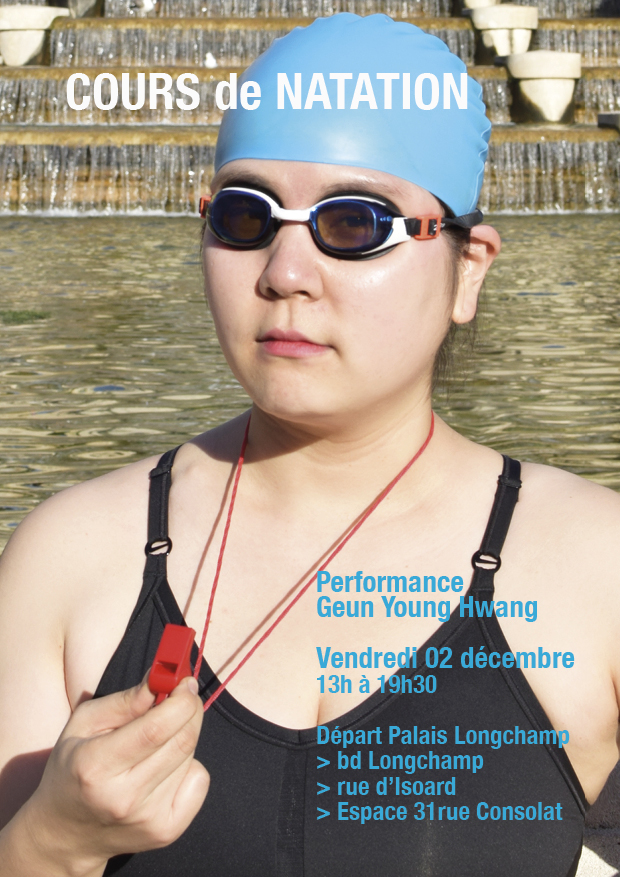
Não sabe nadar, Black Company: https://www.youtube.com/watch?v=VP8cDAzAyRY
Cet atelier a été organisé avec l’ESAAIX et l’UBI en partenariat avec le Projet Entre Serras,
grâce au département cinéma de l’université de Beira Interior et le LabCom, les Musées du Vale de Côa, Vostell Malpartida de Cáceres, au Programme Erasmus et soutien de l’Institut Français de Lisbonne.
Merci à Luis Antero, Caminheiros da Gardunha, iNature, Rewilding – Portugal, au Museu da Paisagem (Institut Politechnique de Lisbonne), au Museo Helgea de Alvear et à L’ESPACE 31 rue Consolat à Marseille de l’artiste Jérémie Setton.
Walking Pirilampos
PROGRAMA SÁB. 30 JULHO 2022
18h00 Encontro na Casa do Guarda de Alcongosta
19h00 Performance / Colocação dos Pirilampos
20h00 Caminhada até ao Posto de Vigia da Gardunha
21h00 Observação dos Pirilampos e escuta / Lanche
22h00 Regresso a Alcongosta / Fundão
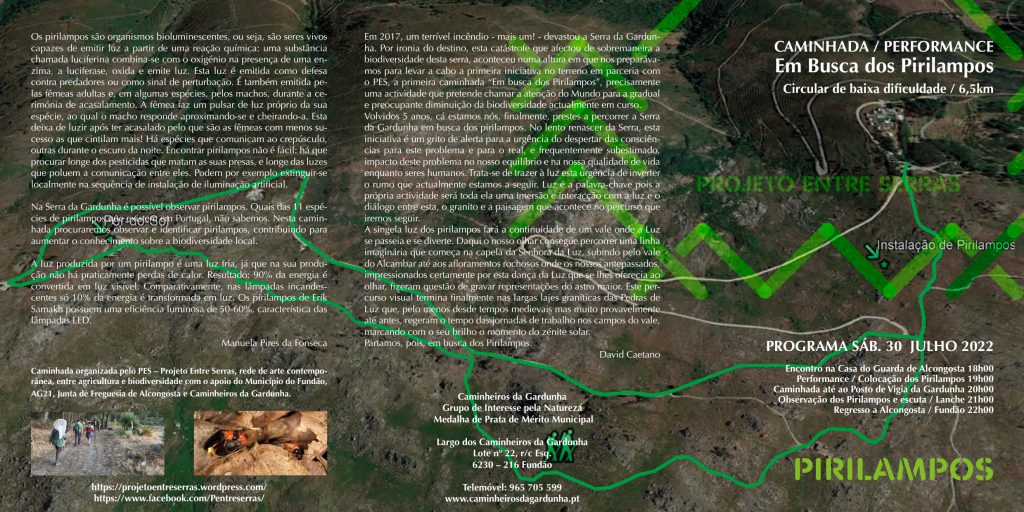
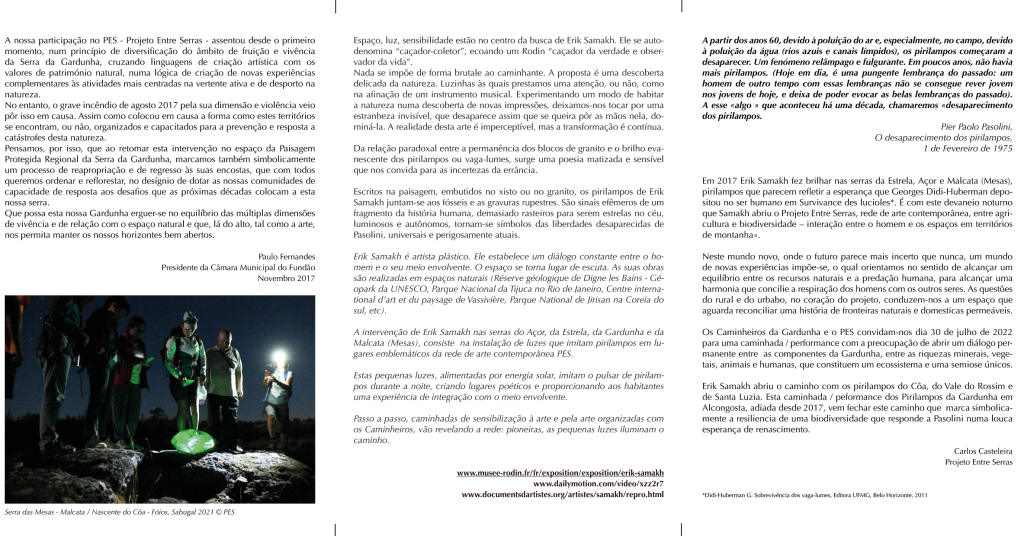
Em 2017, um terrível incêndio – mais um! – devastou a Serra da Gardunha. Por ironia do destino, esta catástrofe que afectou de sobremaneira a biodiversidade desta serra, aconteceu numa altura em que nos preparávamos para levar a cabo a primeira iniciativa no terreno em parceria com o PES, a primeira caminhada “Em busca dos Pirilampos”, precisamente uma actividade que pretende chamar a atenção do Mundo para a gradual e preocupante diminuição da biodiversidade actualmente em curso.
Volvidos 5 anos, cá estamos nós, finalmente, prestes a percorrer a Serra da Gardunha em busca dos pirilampos. No lento renascer da Serra, esta iniciativa é um grito de alerta para a urgência do despertar das consciências para este problema e para o real, e frequentemente subestimado, impacto deste problema no nosso equilíbrio e na nossa qualidade de vida enquanto seres humanos. Trata-se de trazer à luz esta urgência de inverter o rumo que actualmente estamos a seguir. Luz é a palavra-chave pois a própria actividade será toda ela uma imersão e interacção com a luz e o diálogo entre esta, o granito e a paisagem que acontece no percurso que iremos seguir.
A singela luz dos pirilampos fará a continuidade de um vale onde a Luz se passeia e se diverte. Daqui o nosso olhar consegue percorrer uma linha imaginária que começa na capela da Senhora da Luz, subindo pelo vale do Alcambar até aos afloramentos rochosos onde os nossos antepassados, impressionados certamente por esta dança da Luz que se lhes oferecia ao olhar, fizeram questão de gravar representações do astro maior. Este percurso visual termina finalmente nas largas lajes graníticas das Pedras de Luz que, pelo menos desde tempos medievais mas muito provavelmente até antes, regeram o tempo das jornadas de trabalho nos campos do vale, marcando com o seu brilho o momento do zénite solar.
Partamos, pois, em busca dos Pirilampos.
David Caetano
Caminheiros da Gardunha / Telemóvel: 965 705 599
http://www.caminheirosdagardunha.pt
O territorio é a escala
On 12 February 2022, a voice has been given to small-scale community projects that reinvent the connection to the land and to places. Even the most depopulated villages can present unusual dynamics, as we see in the seminar “The territory is the scale” with direct actors of change describing complex processes that blend resilience with entrepreneurship and social innovation. It is the villages that give meaning to the landscape: the conversion of a pine forest into an olive grove, or the creation of a fire protection strip, translate a will to take on and care for the territory. During the afternoon, and because photography and art are optical devices that can activate reflections, forces and dynamics that lead to new imaginaries, the result of the mission entrusted to three photographers is presented: to record the territory. Starting from the village of Cunqueiros, Duarte Belo followed in the direction of the Lousã and Açor mountains, João Abreu towards the Tejo-Ocreza, while Carlos Casteleira went up the Zêzere. Artists help us to see what is not always obvious. This portrait, dated, is important because the territory is constantly changing.
The territory is the scale at which we look. Different scales show different realities. Small-scale interventions, together, ultimately result in larger transformations. This is the starting point for the seminar entitled The Territory is the Scale, promoted by ADXTUR-Agência para o Desenvolvimento Turístico das Aldeias do Xisto, in partnership with Entre Serras Project and the Recreational and Cultural Association of Cunqueiros. The invitation is to question the landscape as the result of a complexity of interventions, at different times, on different scales and with different objectives. It questions the future of the inland territories, the relationship between the countryside and the city, between the rural and the urban. How can we reconsider local economies, the management of the rural environment and its constraints on integration with a global economy based on large urban centres?
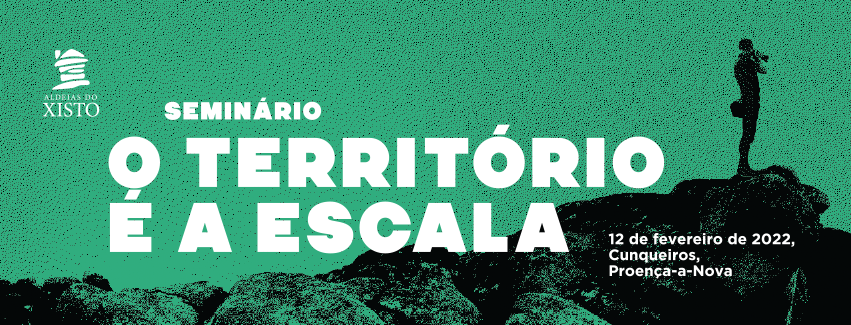
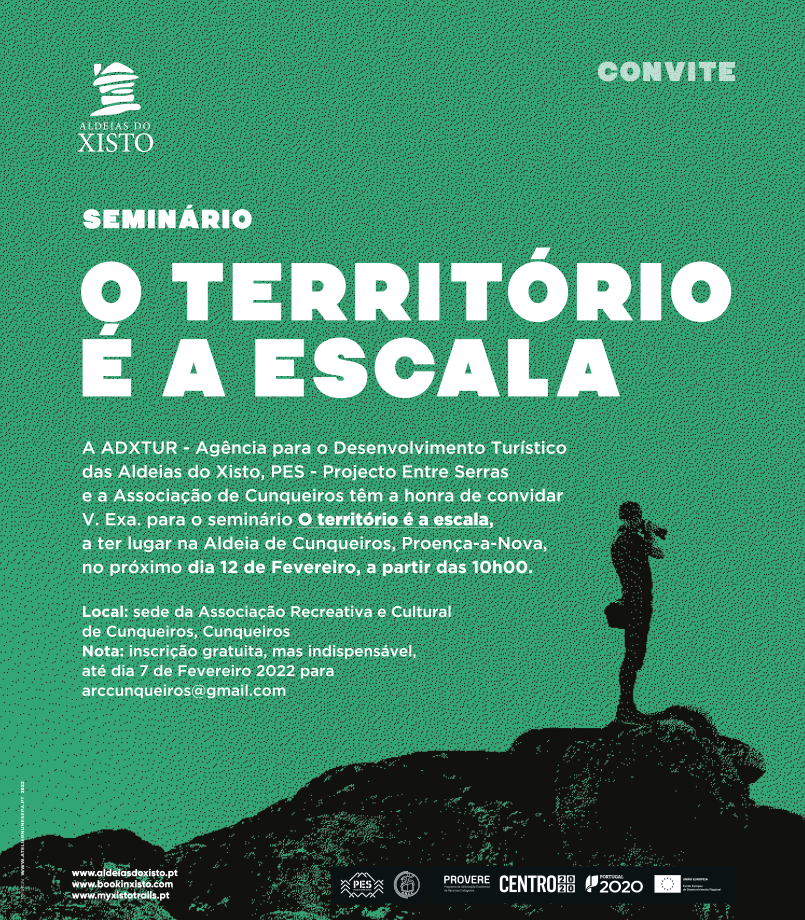
O território é a escala a que se olha. Diferentes escalas mostram realidades diversas. Intervenções de pequena escala, juntas, resultam afinal em transformações maiores. É este o ponto de partida para o seminário intitulado O Território é a Escala, promovido pela ADXTUR-Agência para o Desenvolvimento Turístico das Aldeias do Xisto, em parceria com o Projeto Entre Serras e a Associação Recreativa e Cultural de Cunqueiros. O convite para este dia é o de questionar a paisagem enquanto resultado de uma complexidade de intervenções, a diferentes tempos, com escalas diversas e objetivos distintos. Estas questões interpelam o futuro dos territórios do interior, a relação entre o campo e a cidade, entre o rural e o urbano. Como reconsiderar as economias locais, a gestão do meio rural e os seus constrangimentos na integração com uma economia global assente nos grandes centros urbanos?
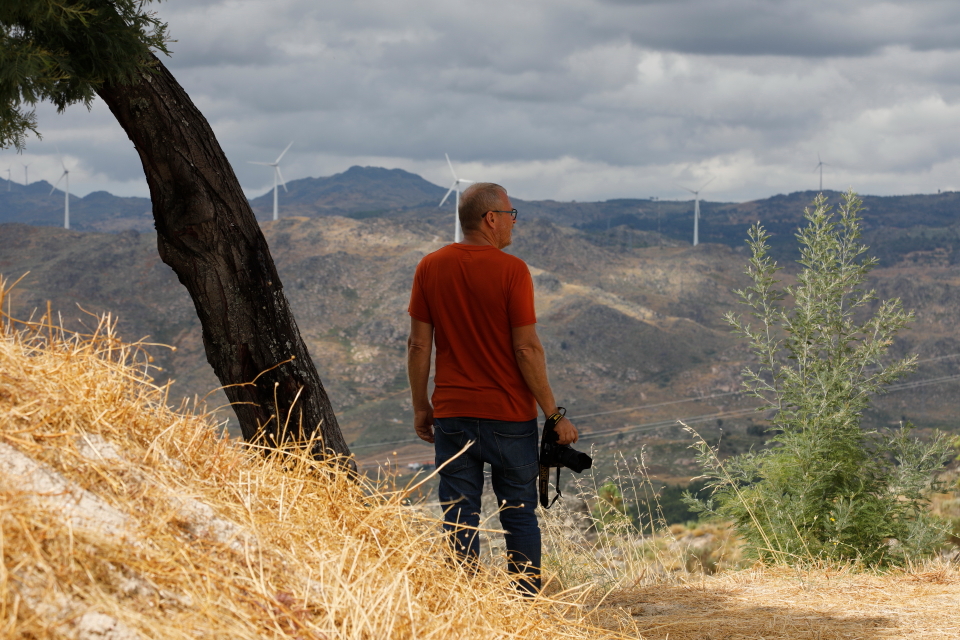
No dia 12 de fevereiro será dada voz a projetos comunitários, de pequena escala, que reinventam a ligação à terra e aos lugares. Mesmo as aldeias mais esvaziadas de população podem apresentar inusitadas dinâmicas, como veremos no seminário com atores diretos da mudança descrevendo processos complexos que mesclam resiliência com empreendedorismo e inovação social. São as aldeias que dão significado à paisagem: a conversão de um pinhal em olival, ou a criação de uma faixa de proteção contra incêndios, traduzem uma vontade de assumir e cuidar do território. De estar presente. Durante o período da tarde, e porque a fotografia e a arte são dispositivos óticos que podem ativar reflexões, forças e dinâmicas que conduzem a novos imaginários, apresenta-se o resultado da missão confiada a três fotógrafos: registar o território. Partindo da aldeia de Cunqueiros, Duarte Belo seguiu na direção das serras da Lousã e do Açor, João Abreu em direção ao Tejo-Ocreza, enquanto Carlos Casteleira subia o Zêzere. Os artistas ajudam-nos a ver o que nem sempre é óbvio. Este retrato, datado, é importante porquanto o território está em permanente mudança.
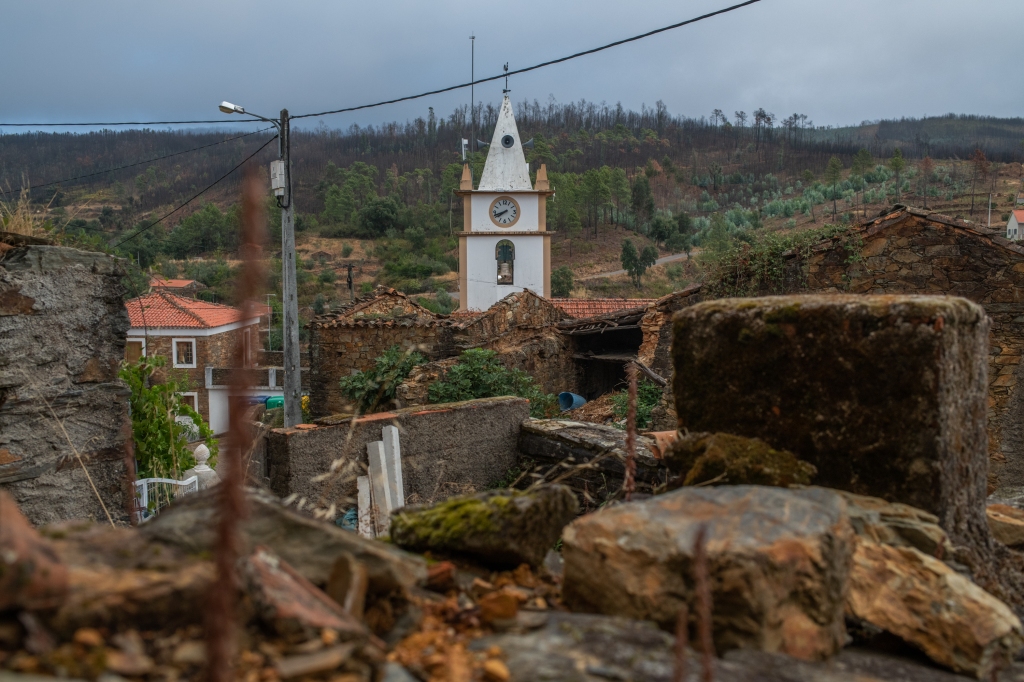
Este Seminário revela o fluxo constante que existe entre o mundo rural e o urbano: a população pode partir para os grandes centros, mas os pés, esses, continuam na terra. E regressam periodicamente, juntando-se aos que lá resistem. O País, é tudo isto, e está vivo. E queremos olhá-lo a partir de dentro, através de um envolvimento direto, físico e relacional, comprometido.
Local: sede da Associação Recreativa e Cultural de Cunqueiros.
NOTA: inscrição gratuita, mas indispensável, até dia 5 de fevereiro 2021 para arccunqueiros@gmail.com.
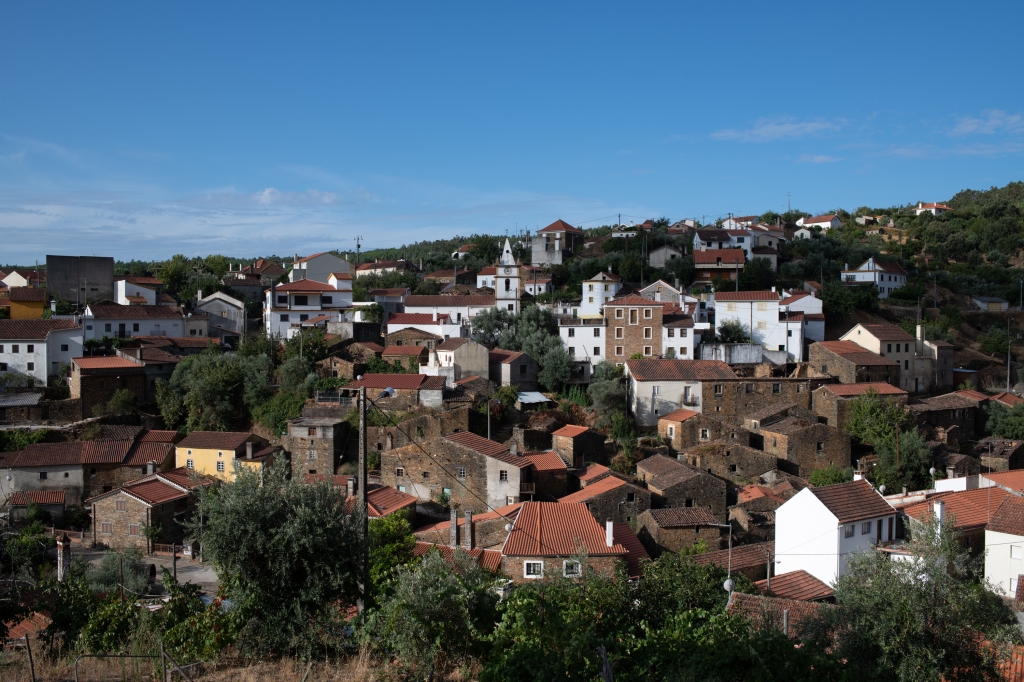
BIOS Fotógrafos
Duarte Belo (Lisboa, 1968). Formação em arquitetura (1991). Desde 1986 que trabalha no levantamento fotográfico sistemático da paisagem, formas de povoamento e arquiteturas em Portugal. Este trabalho continuado sobre o território deu origem a um arquivo fotográfico de mais de 1.850.000 fotografias.
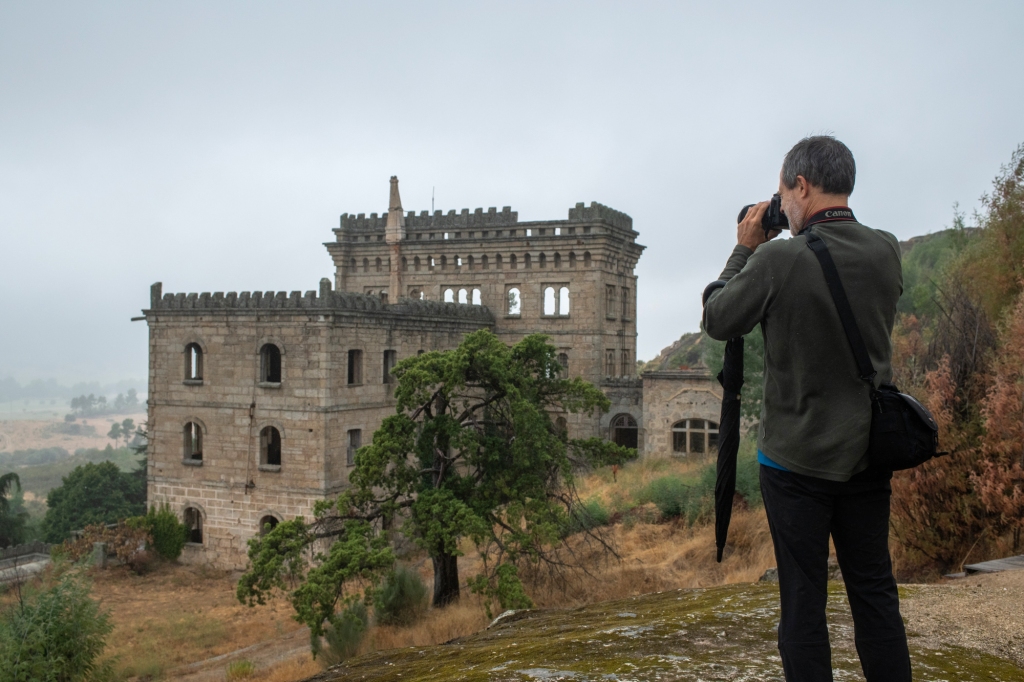
Publicou vários livros sobre o tempo e a forma do território português, de que se destacam: Portugal — O Sabor da Terra (1997-1998); Portugal Património (2007-2008) e Caminhar Oblíquo; Depois da Estrada; Viagem Maior (2020). De outros projetos editados em livro poderíamos referir O Vento Sobre a Terra (2002); Território em Espera (2005); Fogo Frio (2008); Portugal Luz e Sombra (2012); A Linha do Tua; (2013); Magna Terra (2018). Expõe desde 1987. Lecionou áreas relacionadas com a fotografia e a arquitetura. Foi curador de várias exposições. Participa regularmente em conferências sobre paisagem, arquitetura e fotografia. É editor do blog Cidade Infinita.
João Abreu (Moçambique, 1974). Licenciado em Design de Comunicação, Mestre em Comunicação, Cultura e Tecnologias de Informação e Doutorado em Ciências da Comunicação, é professor e investigador na Escola Superior de Comunicação Social (ESCS-IPL). Desde 1998, trabalha os temas da comunicação nos museus, património e paisagem. Participa regularmente, como investigador, autor, curador e editor, em conferências, exposições e publicações dedicadas ao registo e comunicação de paisagem. É fundador e membro da equipa do Museu da Paisagem.
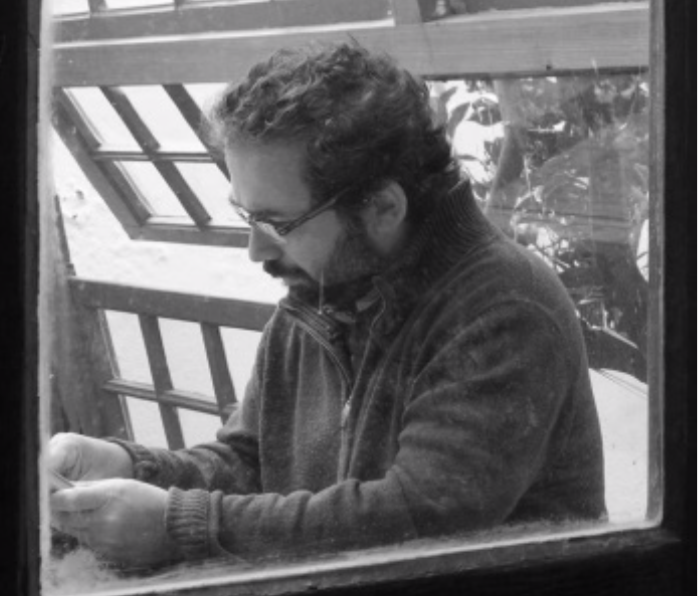
Carlos Casteleira (Moita, 1962). O trabalho de Carlos Casteleira, pontuado por protocolos geofotográficos, desdobra-se em territórios e paisagens para renovar uma abordagem crítica à ecologia, à biodiversidade, aos equilíbrios socioeconómicos e geopolíticos. Através da fotografia e da cartografia, das imagens e a da escrita, ele inicia uma reflexão sobre o antropocentrismo, sobre as relações entre os seres humanos com os seus meios, as redes e os territórios. Carlos Casteleira é doutorando em Media Artes na Universidade da Beira Interior e Universidade Aix Marseille-LESA. Ensina fotografia na Escola de Arte de Aix en Provence e desenvolve a sua pesquisa como parte do Projeto Entre Serras, Rede de arte contemporânea, entre agricultura e biodiversidade que projeta e coordena.
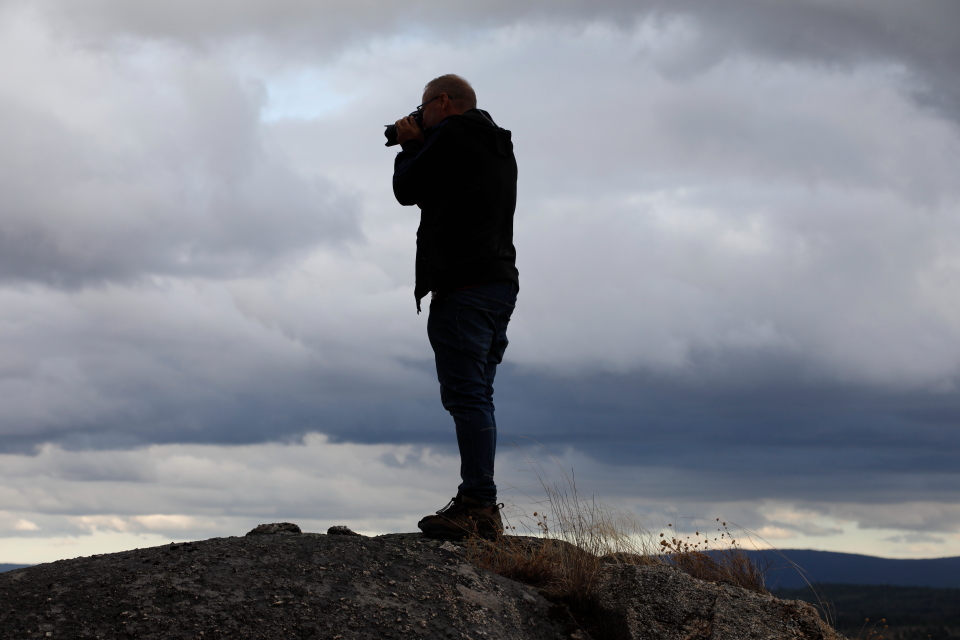
Créditos Fotografias: Projeto Entre Serras – PES
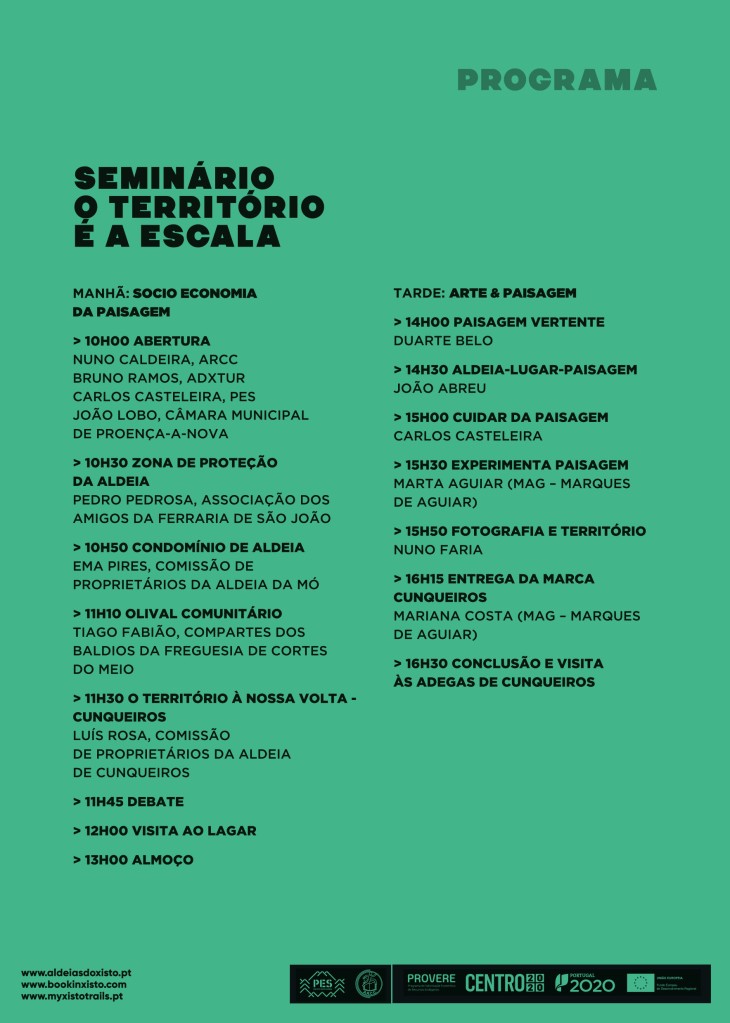
Walking the Data – 2020
À partir de 2015, pour des raisons souvent différentes selon les pratiques et les préoccupations de chacun, nous avons entrepris de développer une démarche et un dispositif conjoints que nous avons respectivement appelés Walking the Data et Plotmap. Walking the Data désigne une recherche ouverte d’investigation du territoire qui s’efforce de mettre en œuvre des relations entre propositions artistiques, engagements citoyens, savoirs patrimoniaux, rencontres et échanges. C’est une démarche qui doit beaucoup aux diverses formes de pratiques de la marche et qui affirme une forte inscription dans ce qu’il est convenu d’appeler des territoires. Le Plotmap est un dispositif d’édition numérique en ligne, dans un espace cartographique, de divers médias : textes, images, vidéos, sons. L’articulation entre ces deux éléments, une démarche d’inscription des pratiques artistiques dans le territoire et un dispositif d’édition cartographique en ligne, est au coeur de ce projet, c’est ce qui le constitue comme un projet de recherche.
https://walking-the-data.esaaix.fr
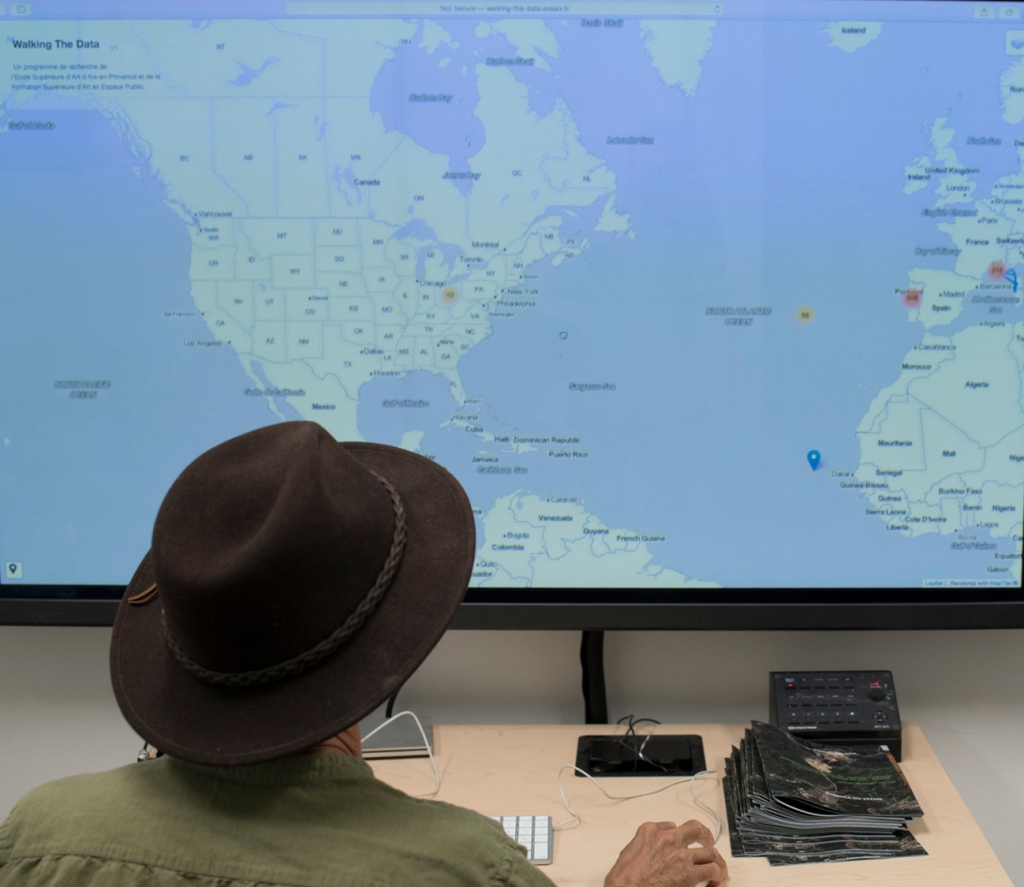

From Feb. 2023 to 2026, Projeto Entre Serras is a Creative Europe project. As such, it is supported by the European Commission.

